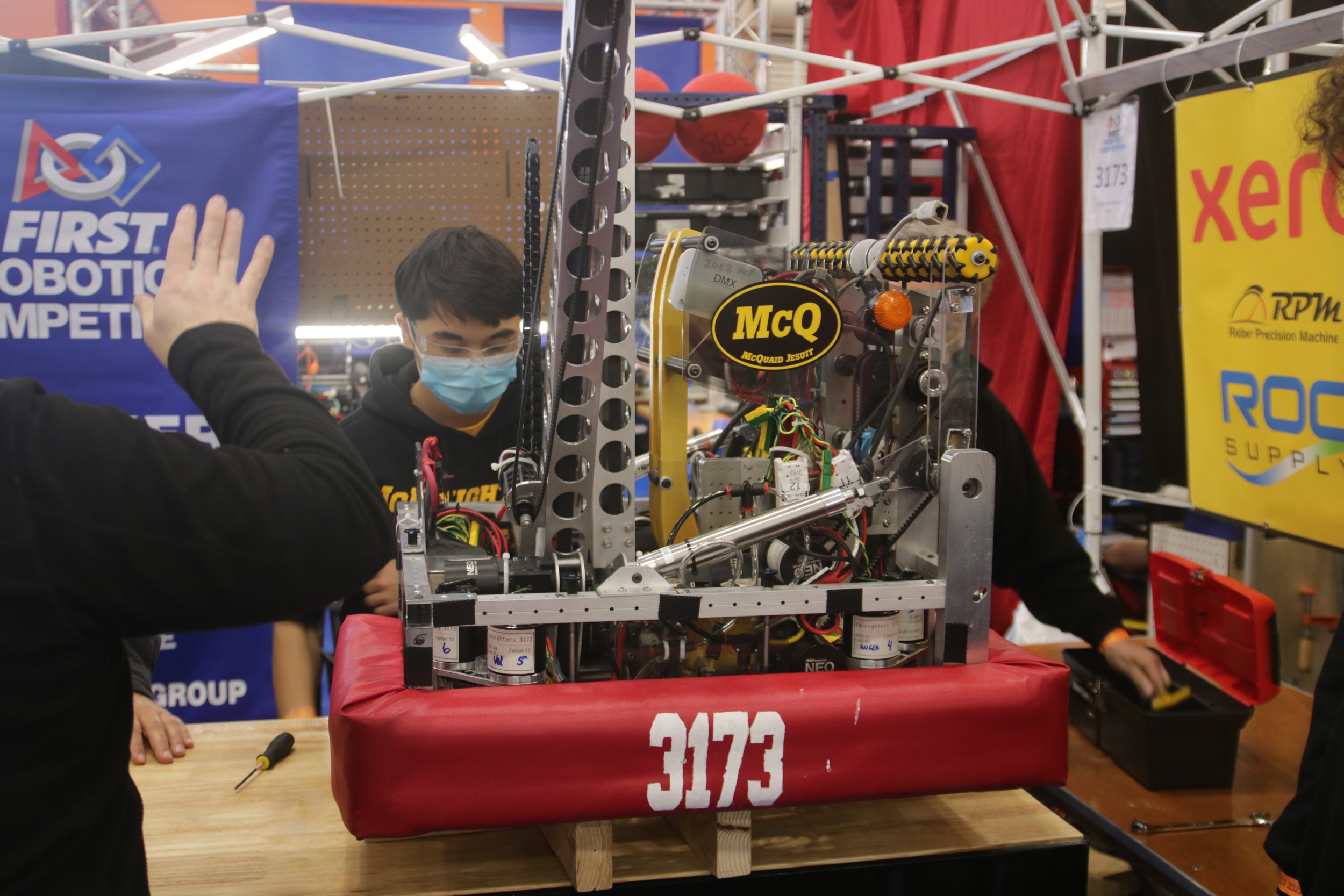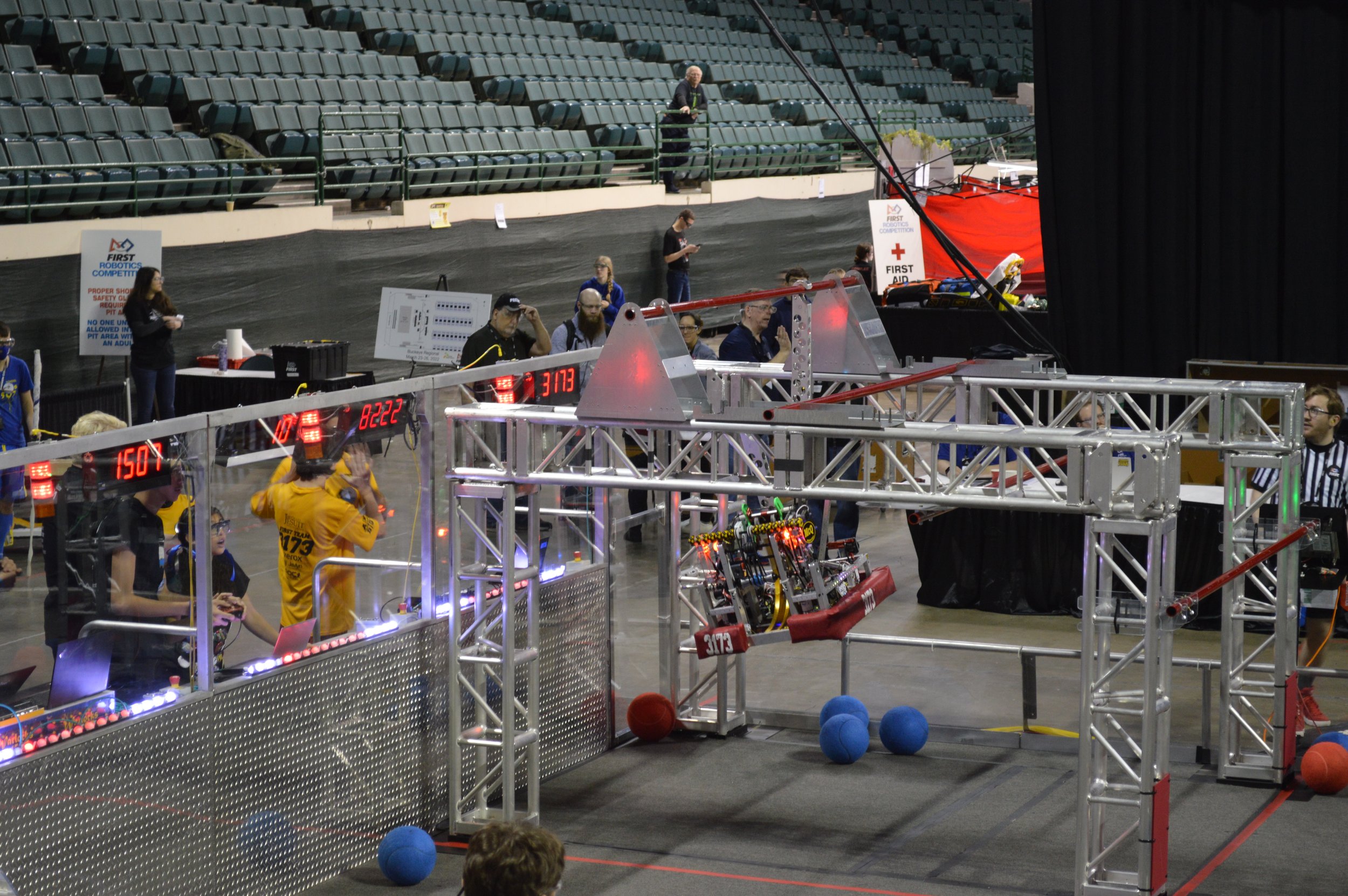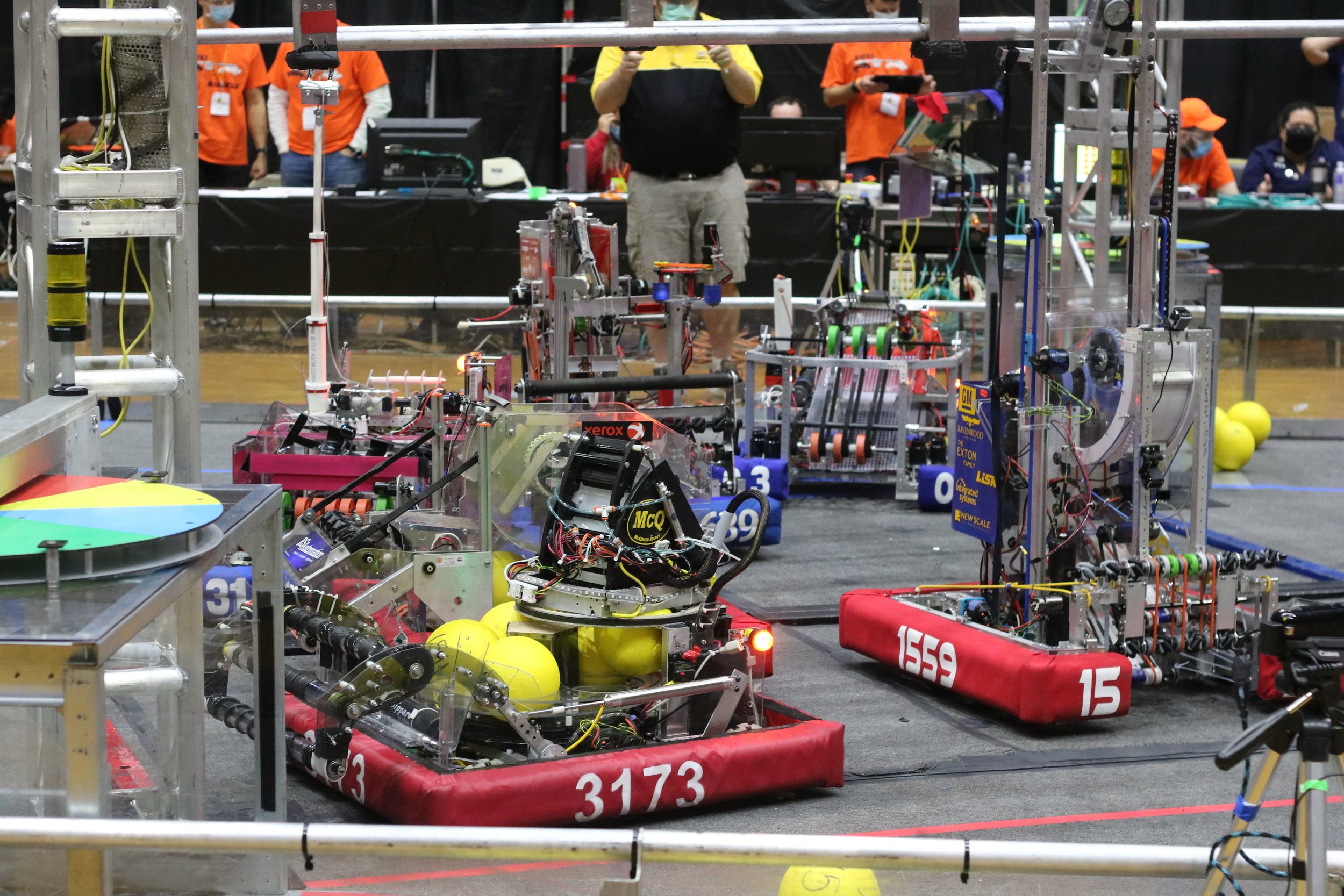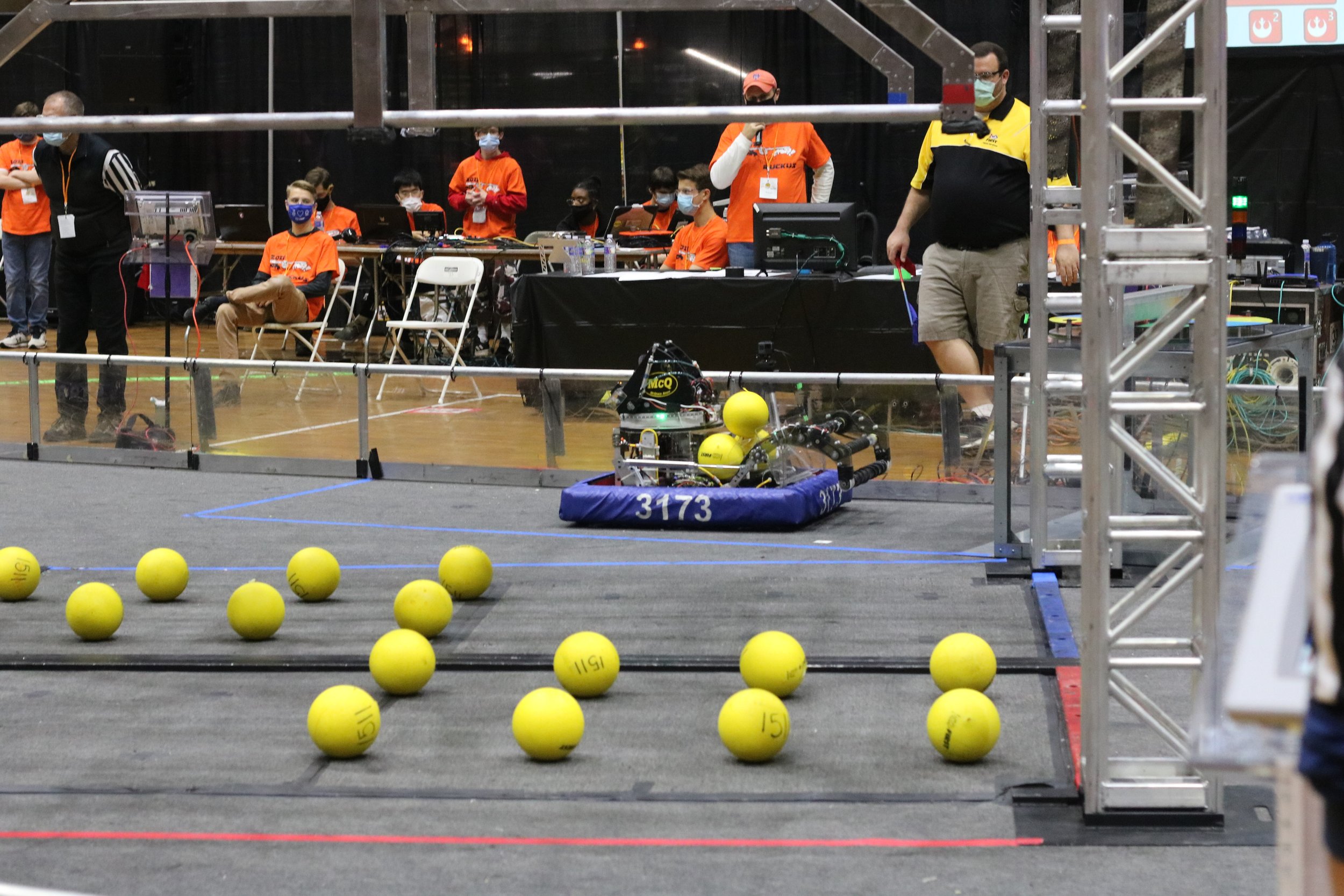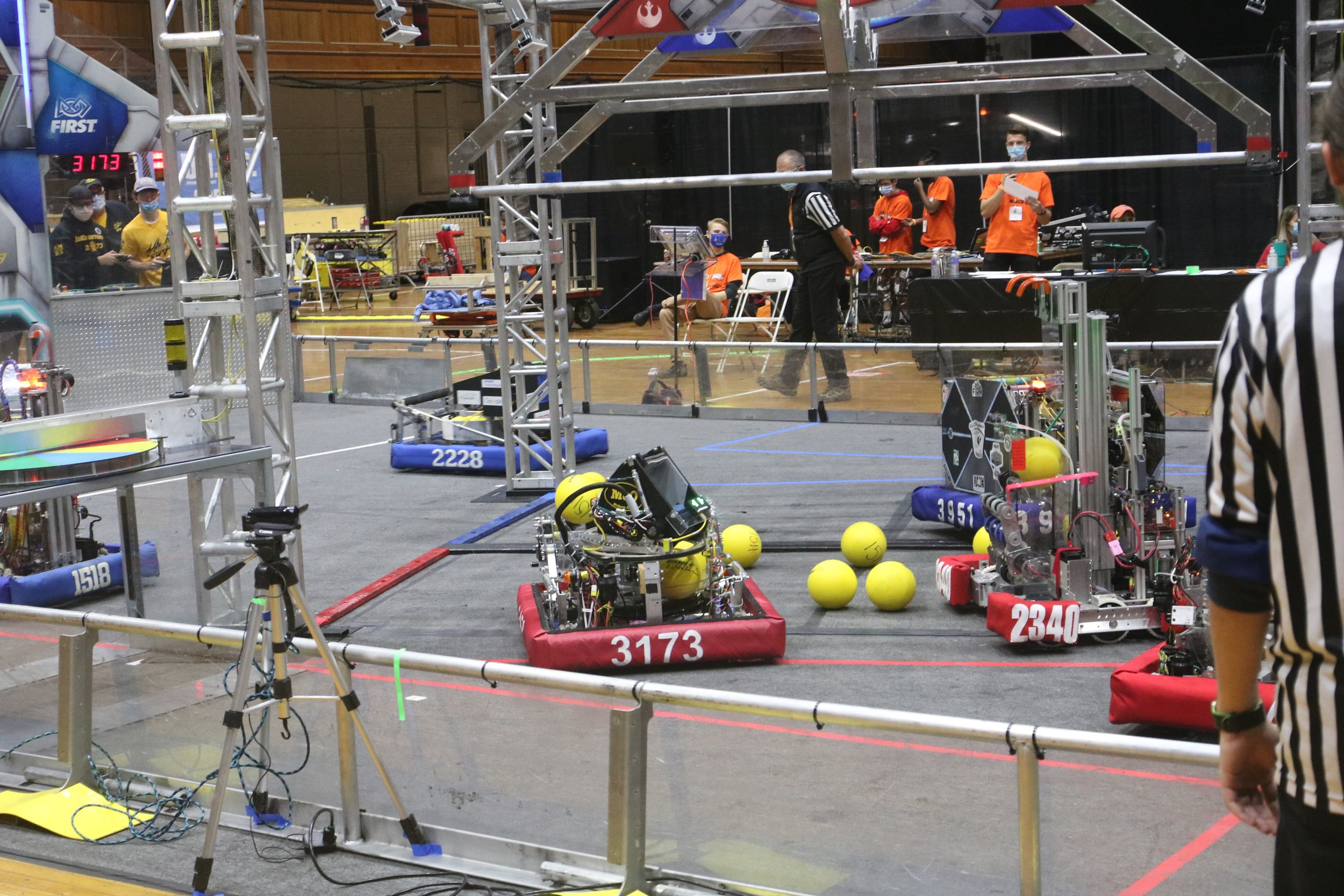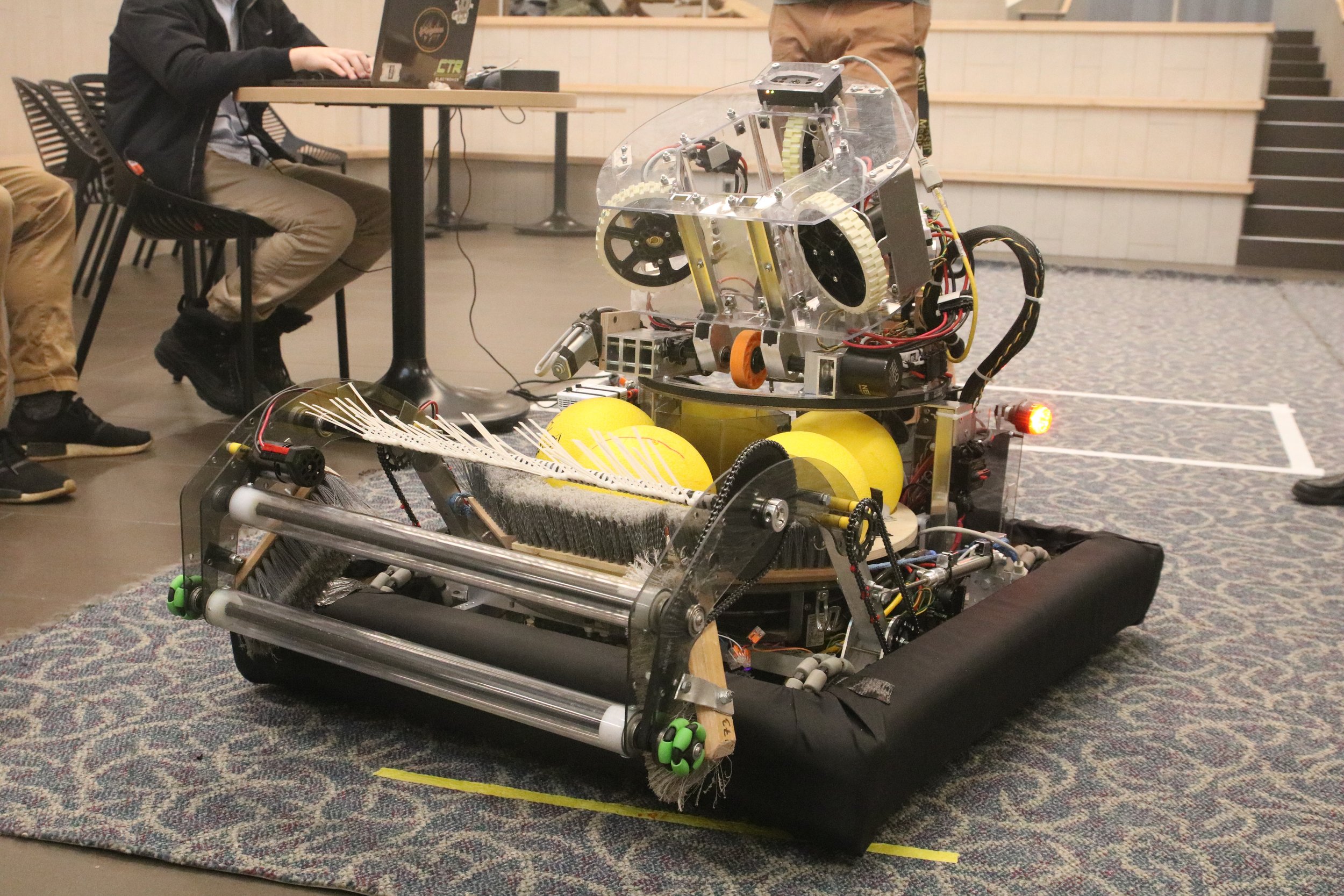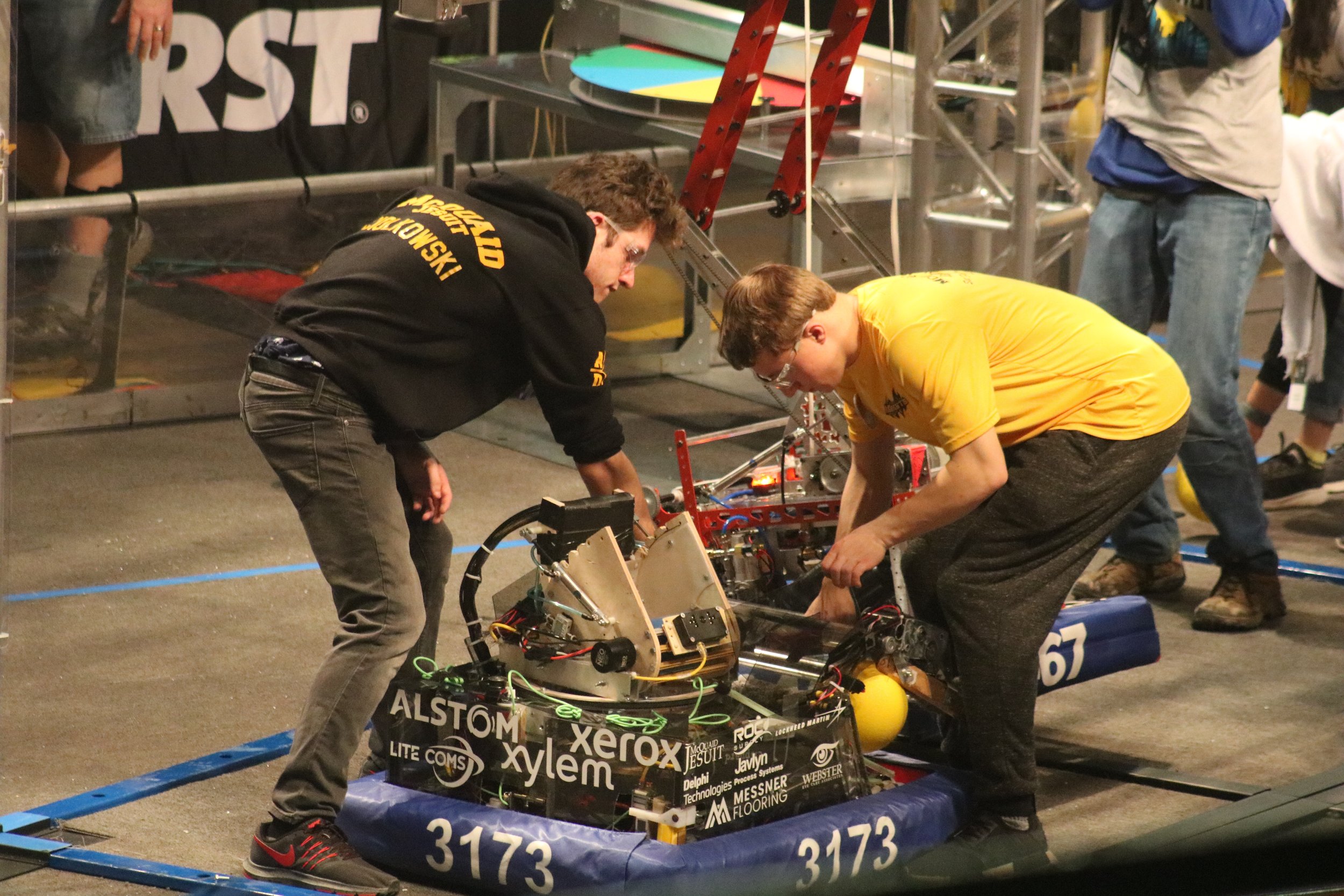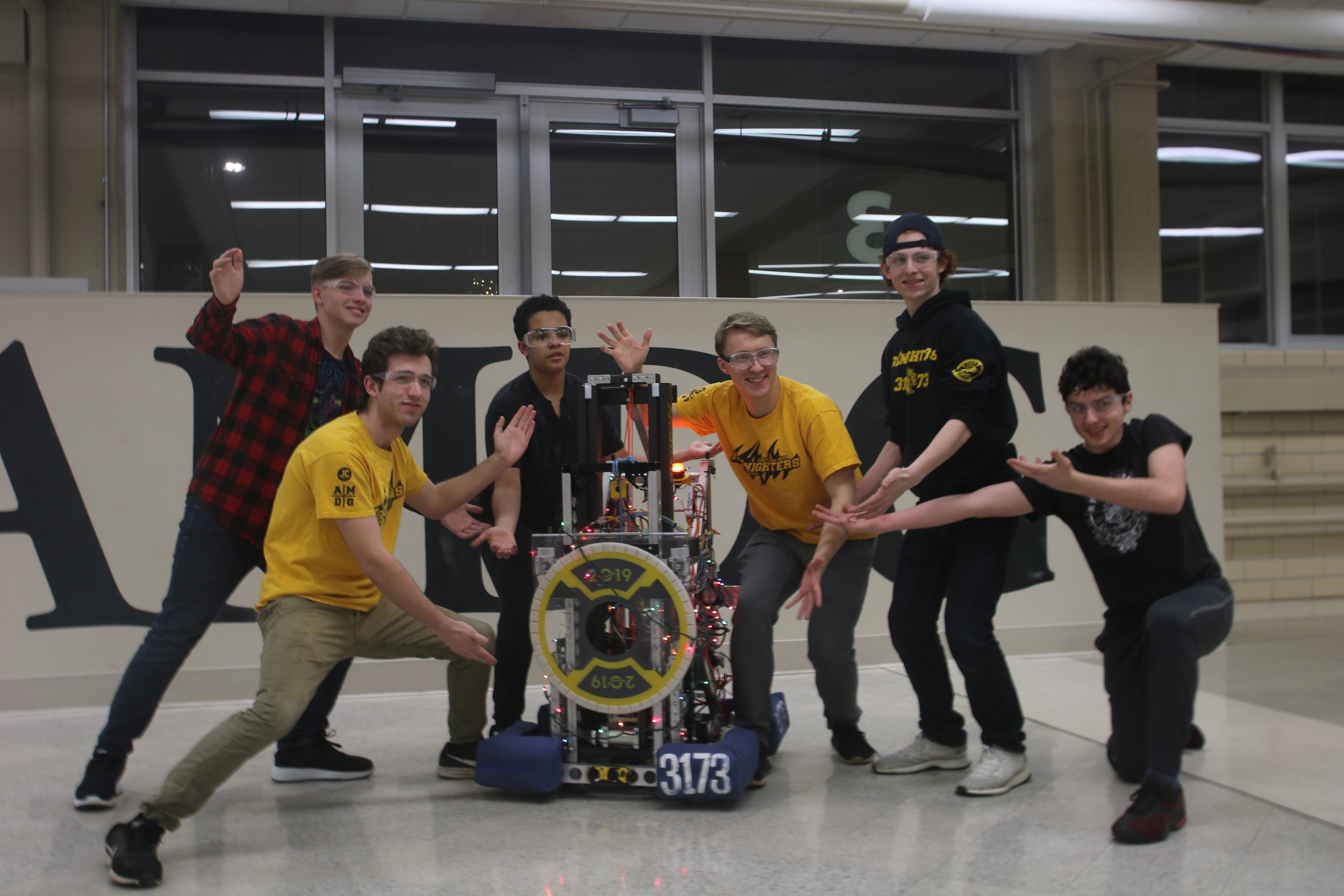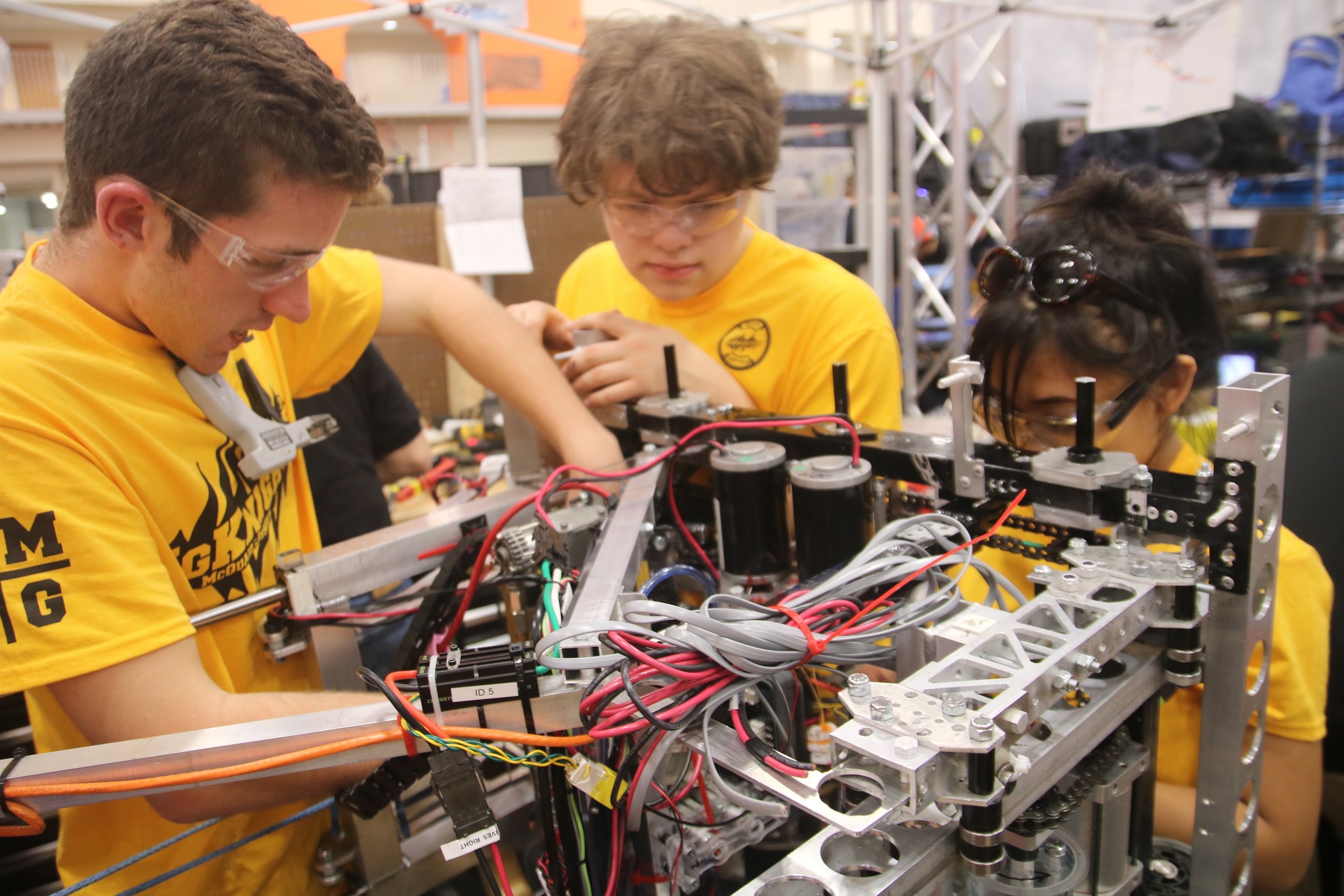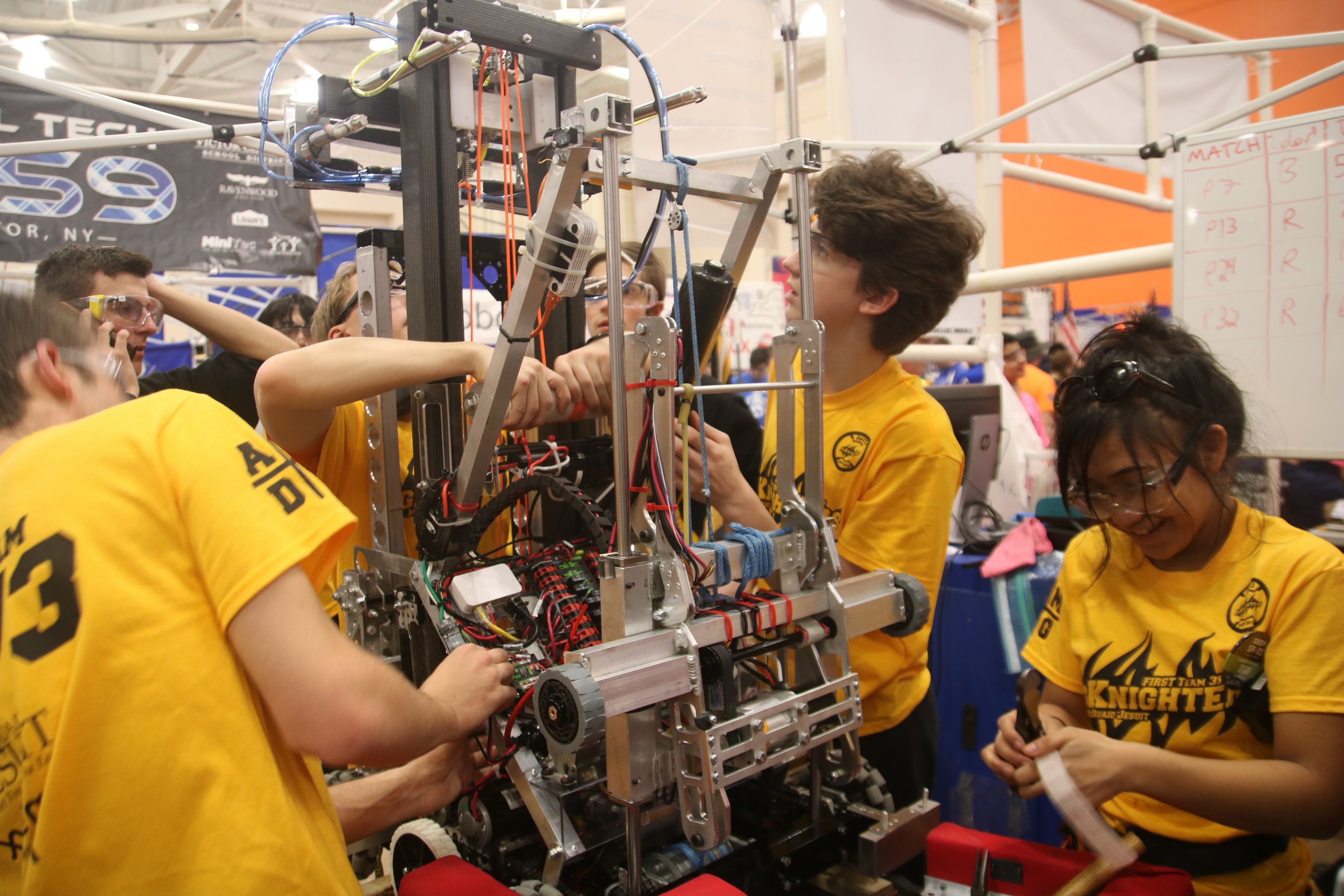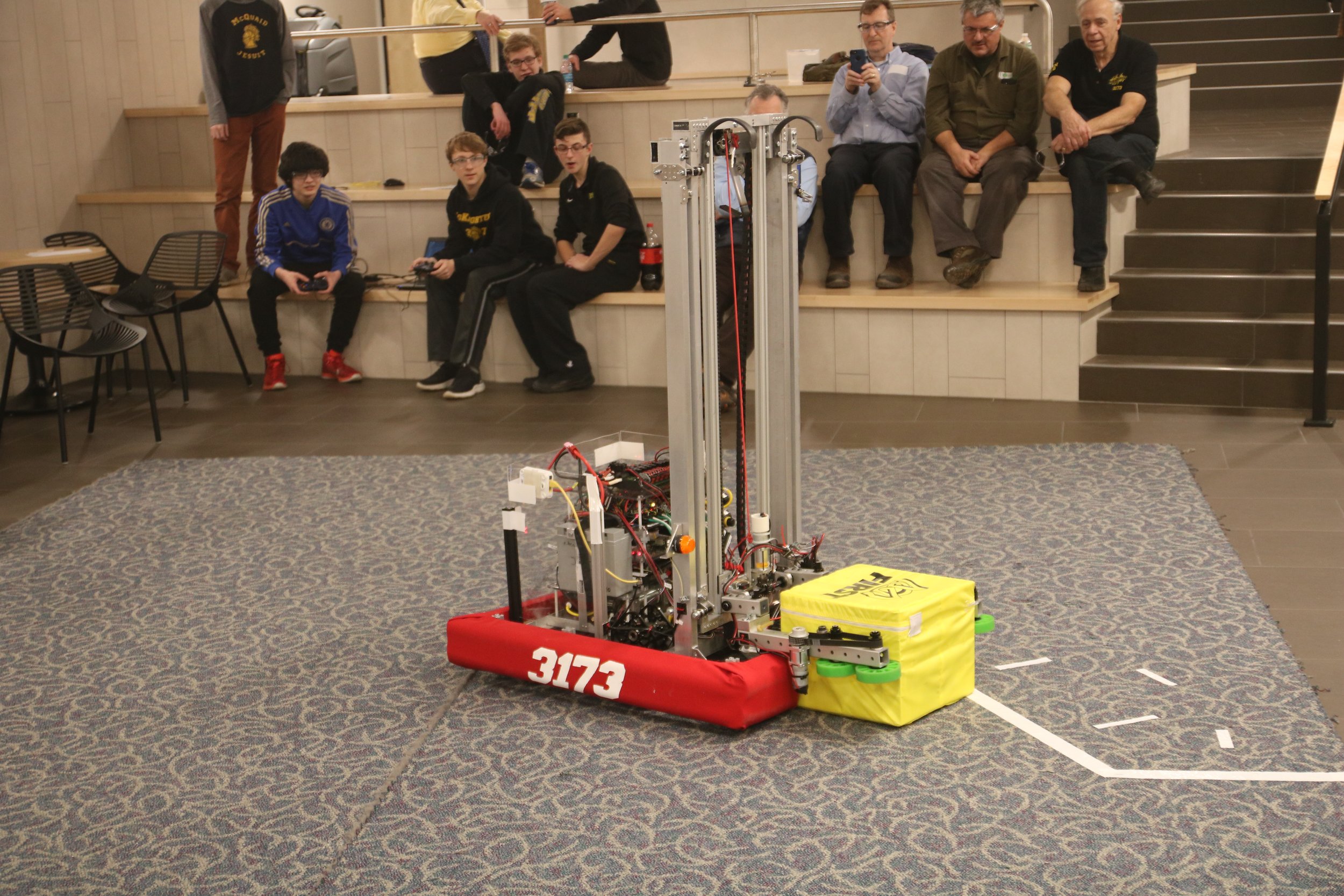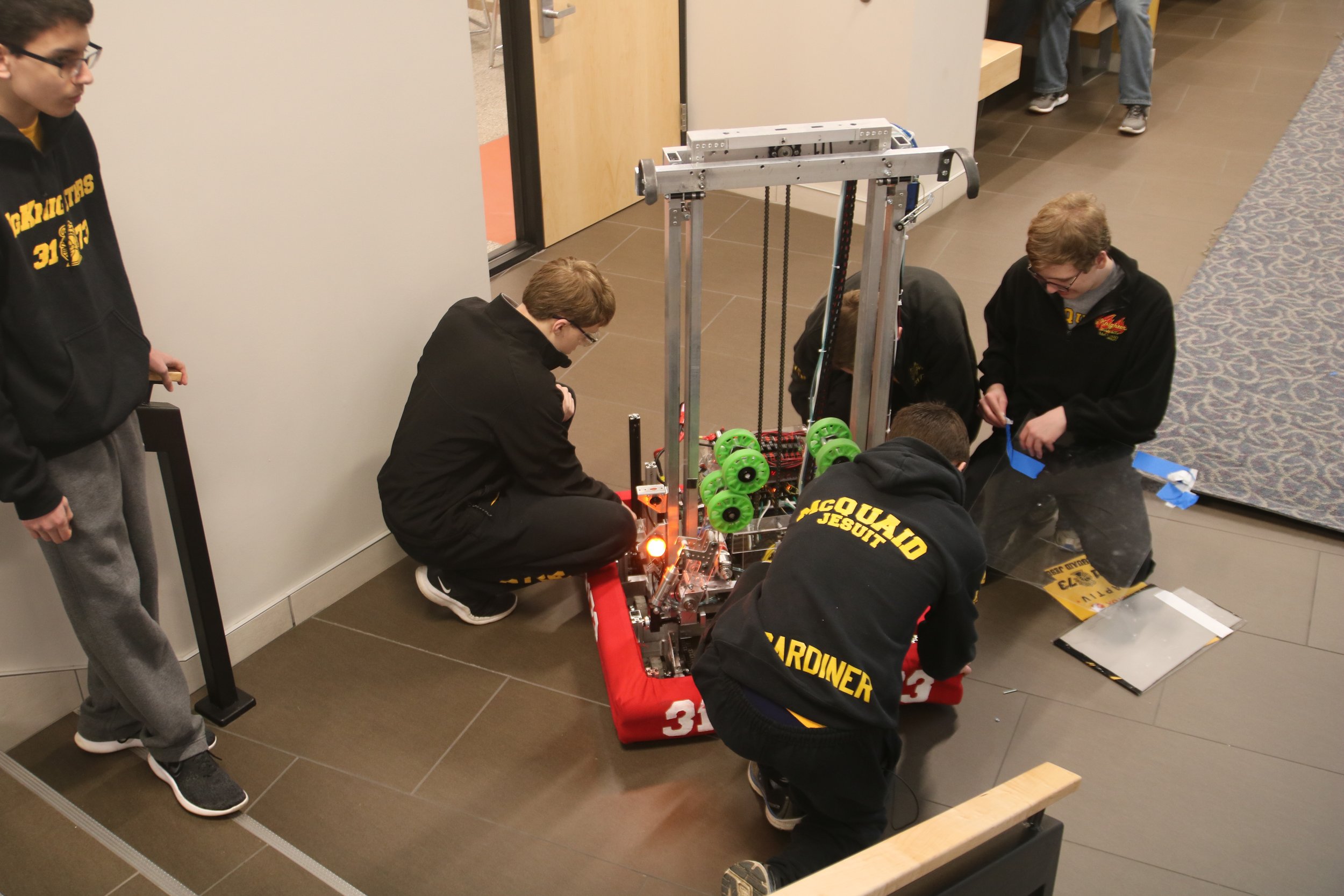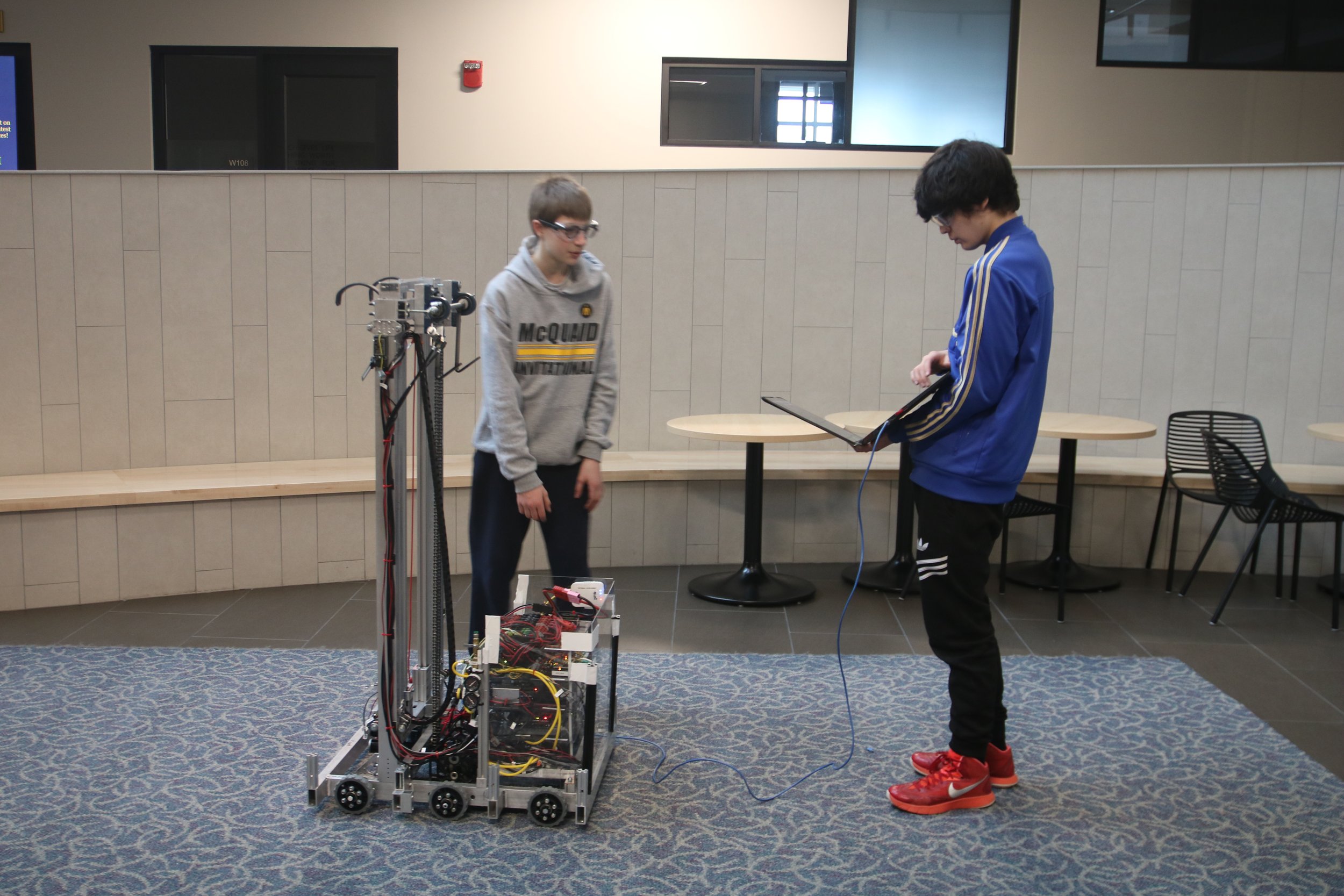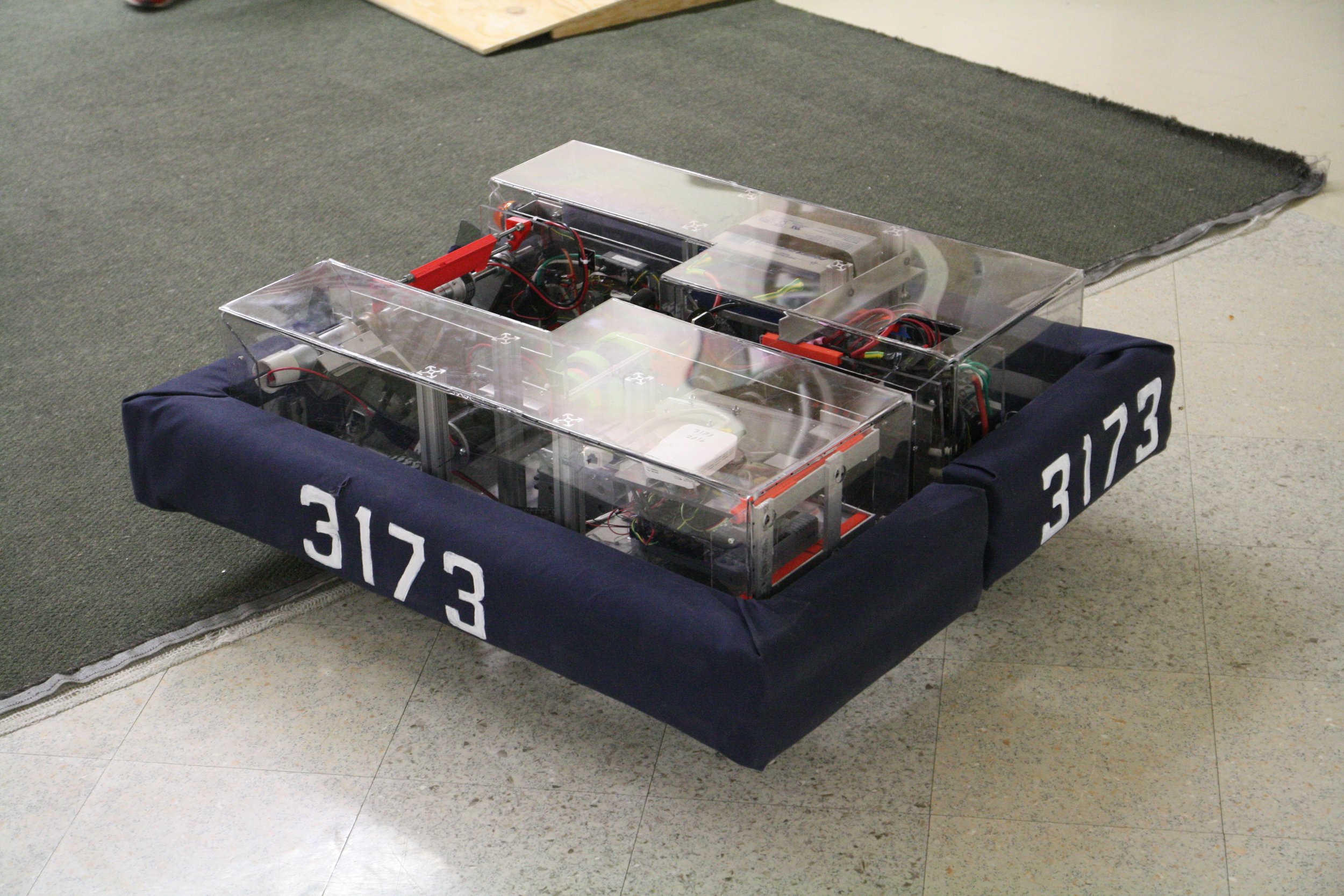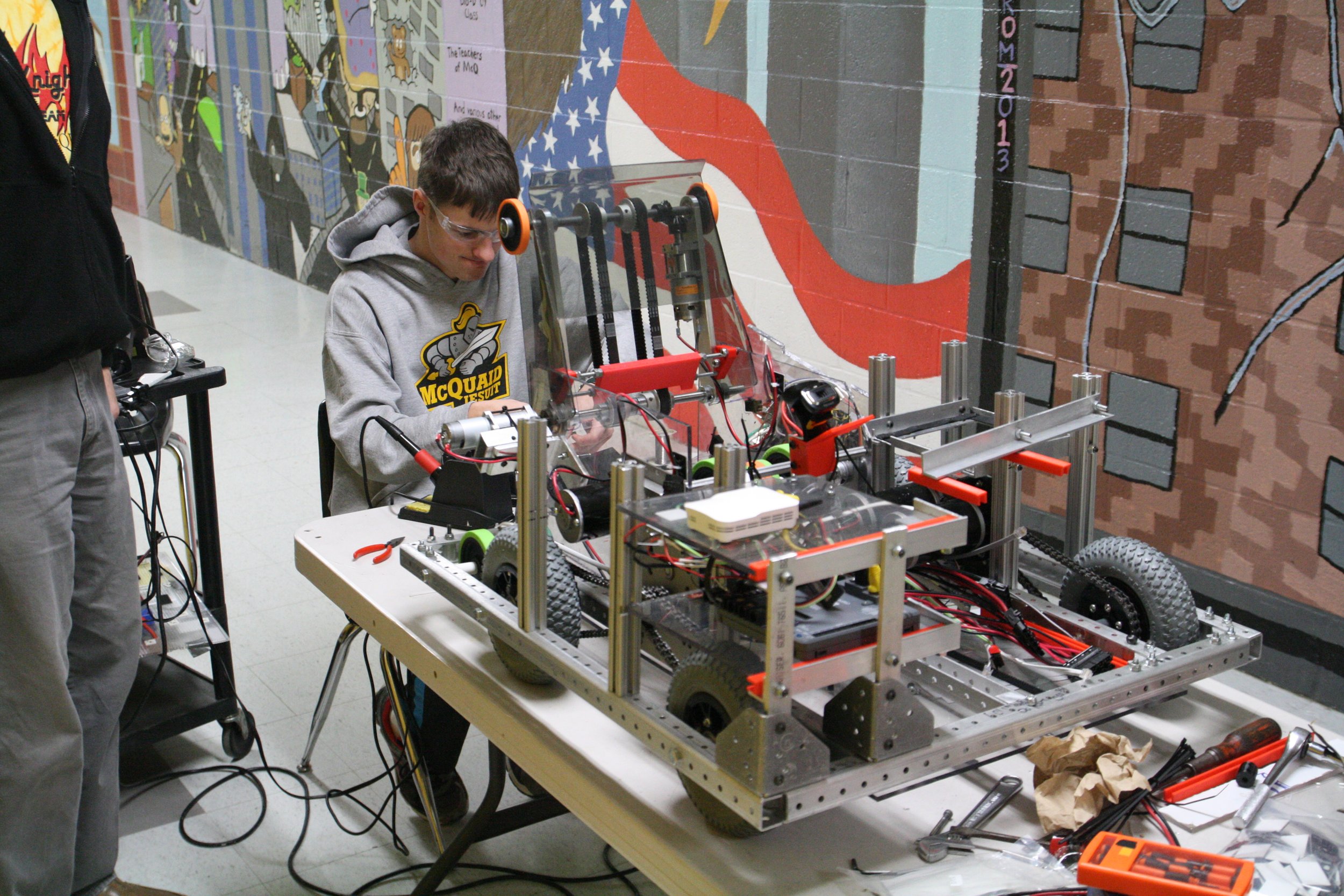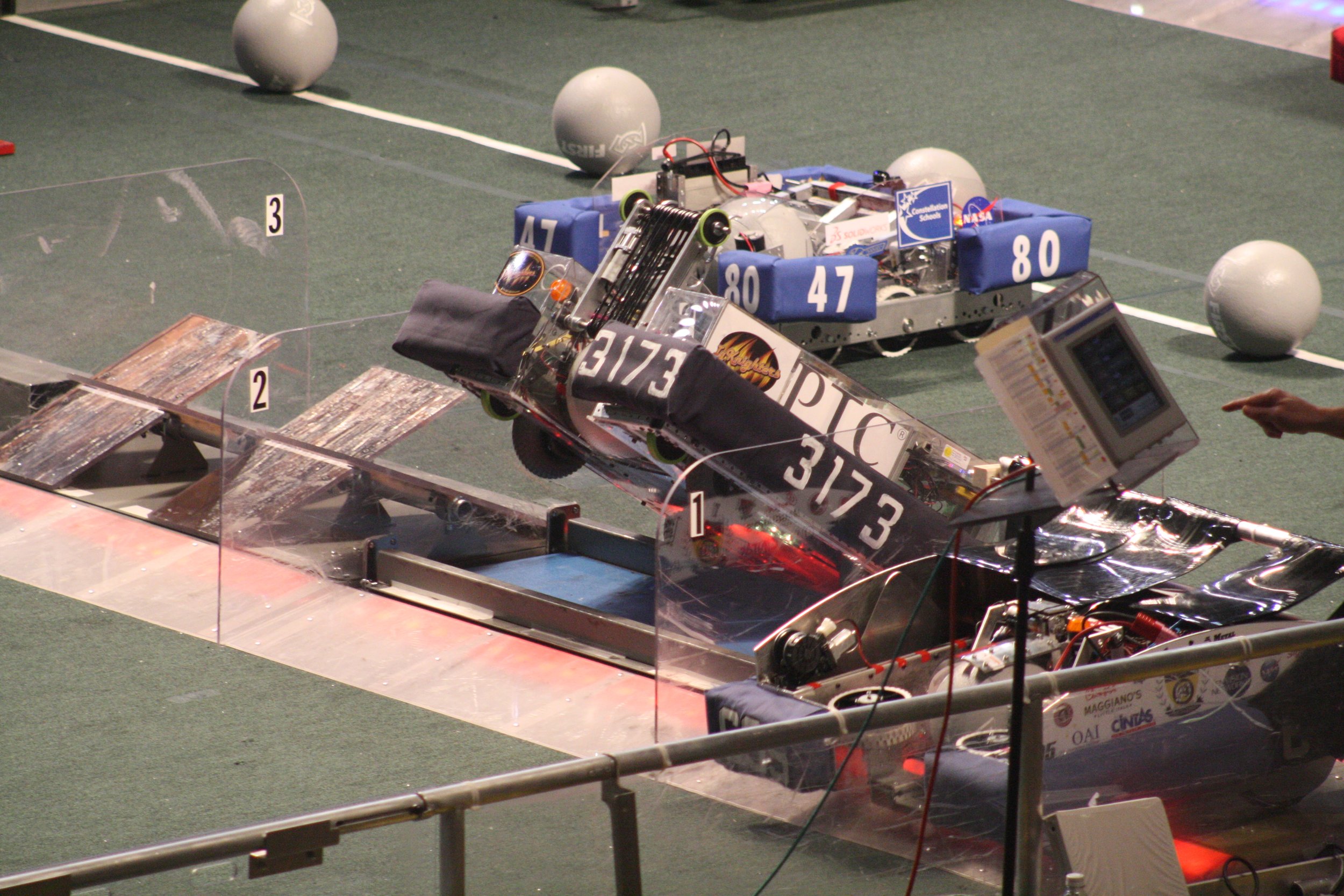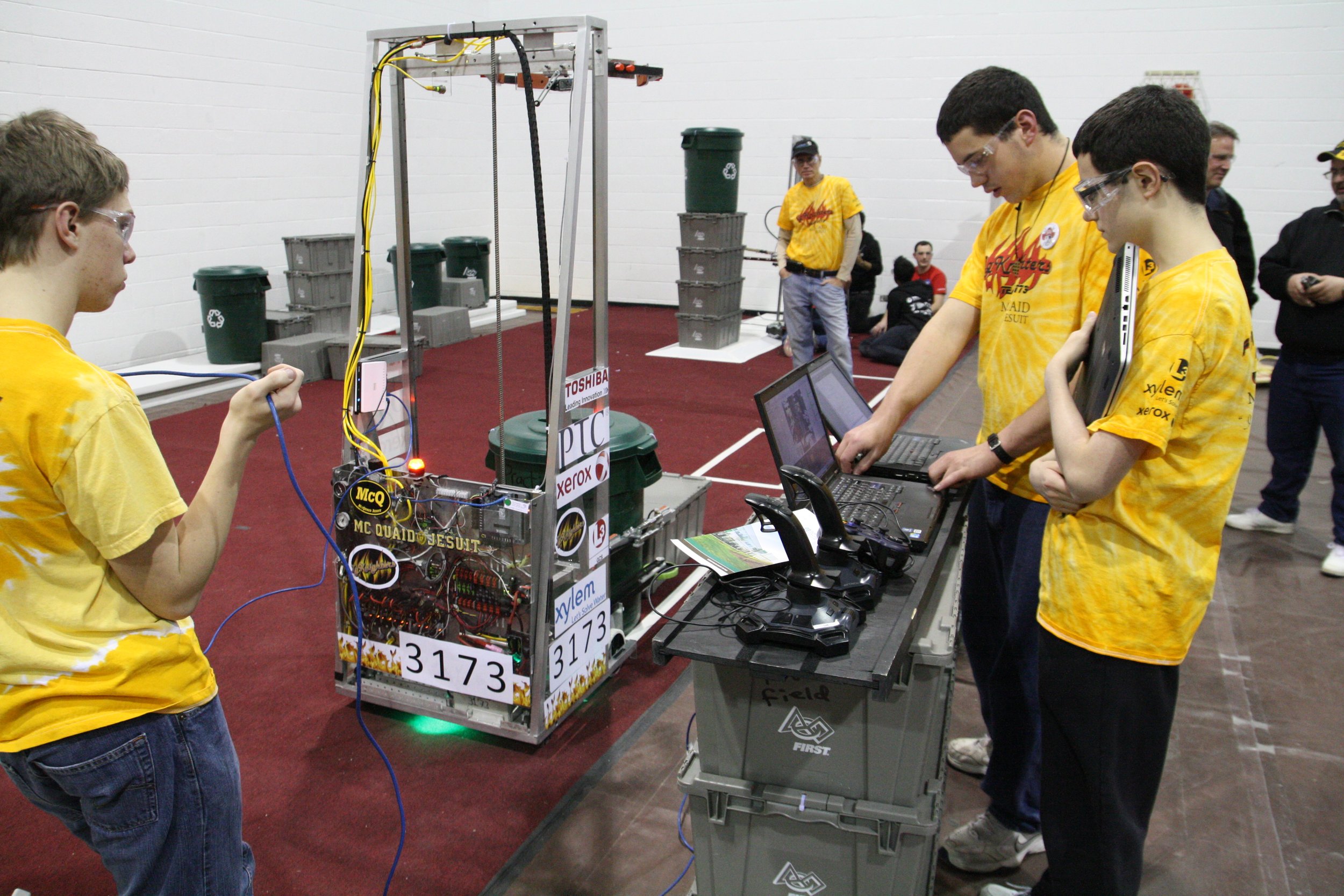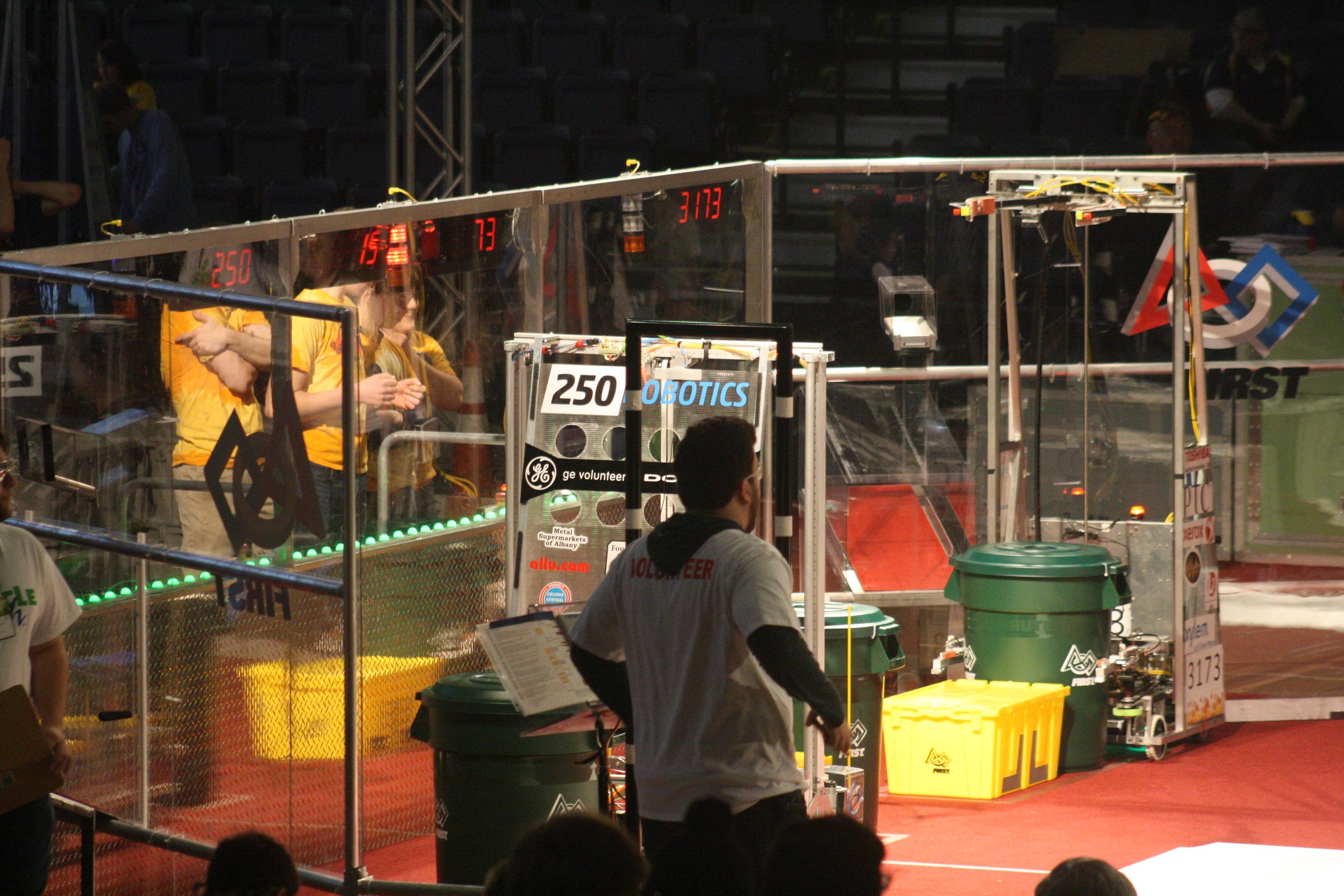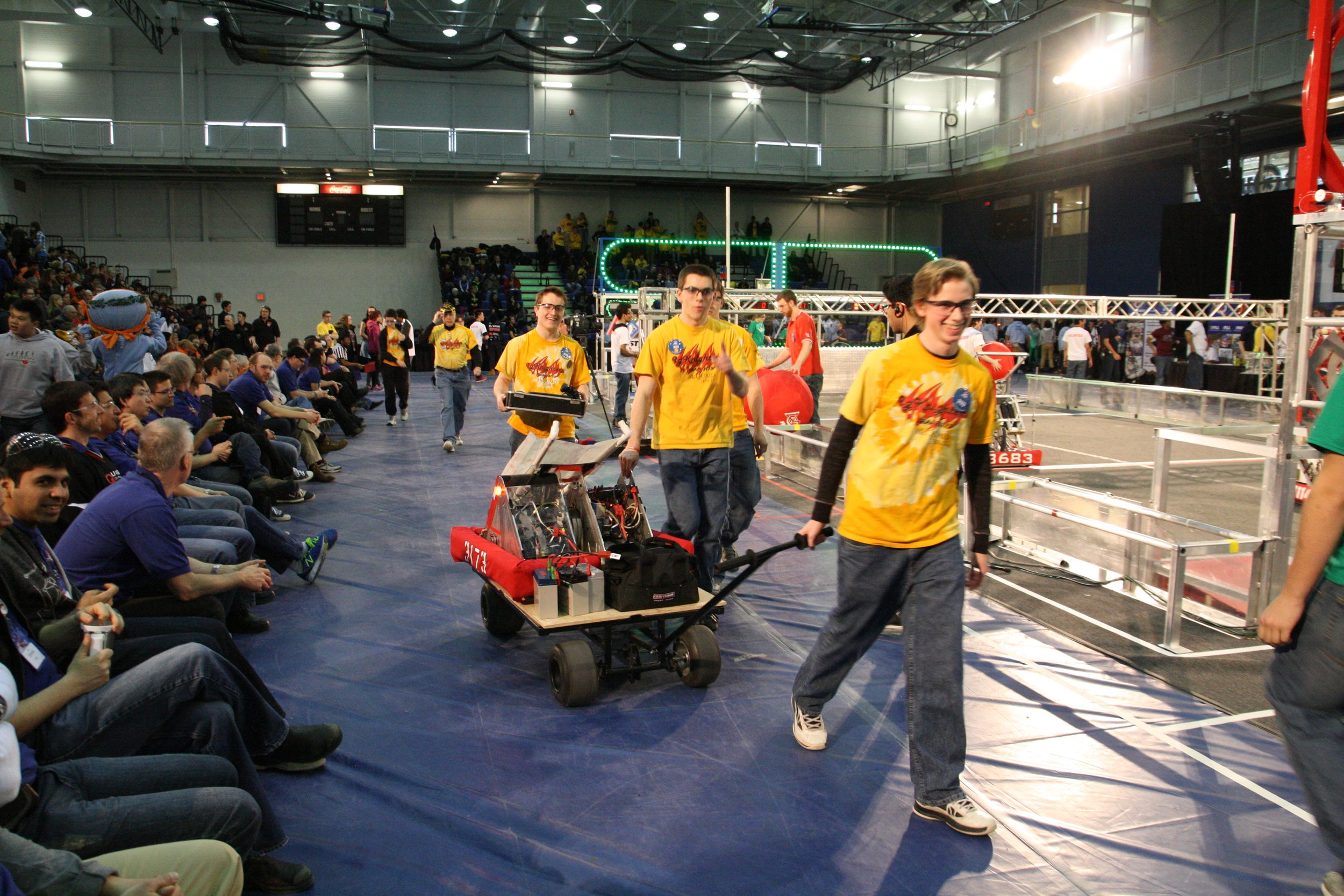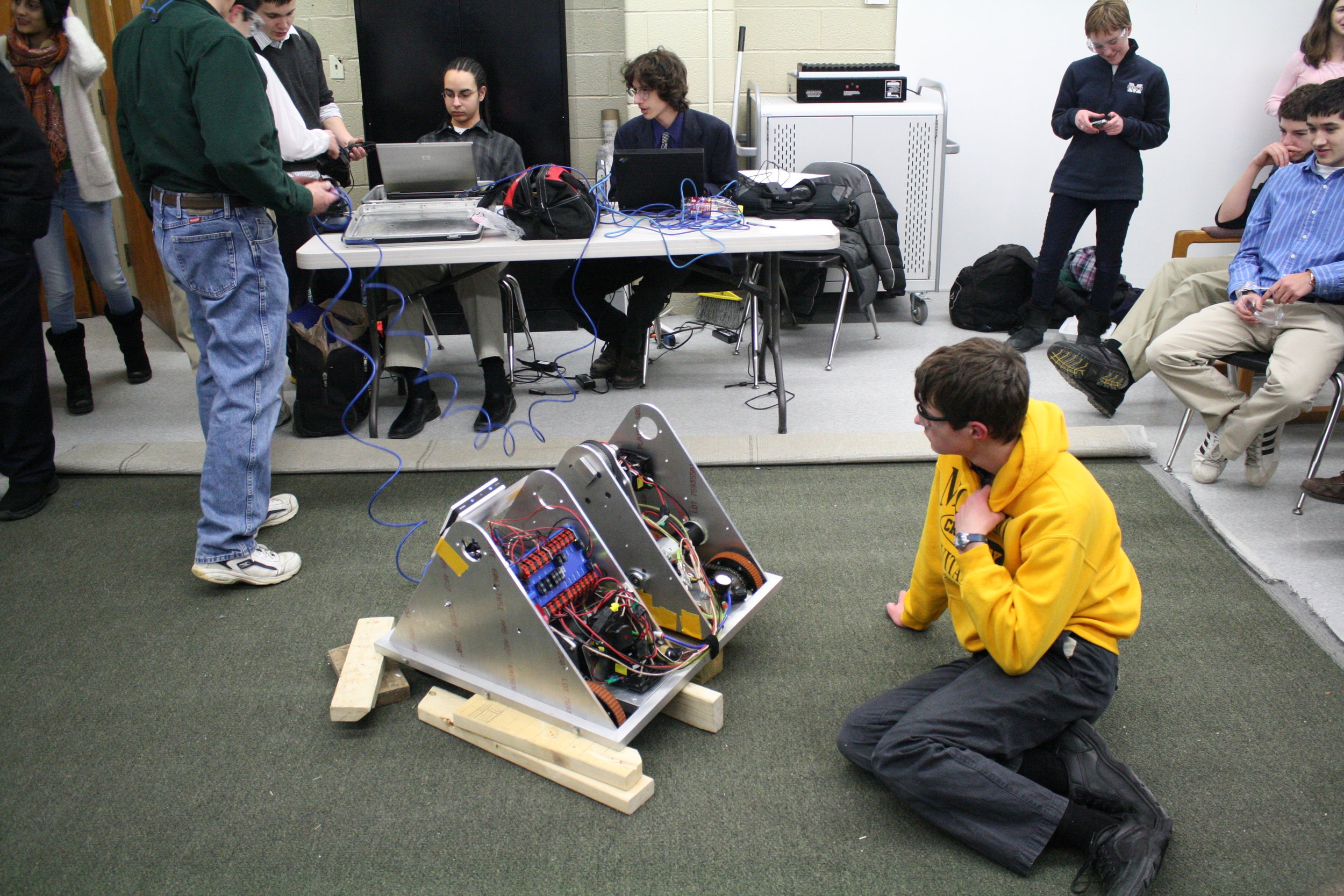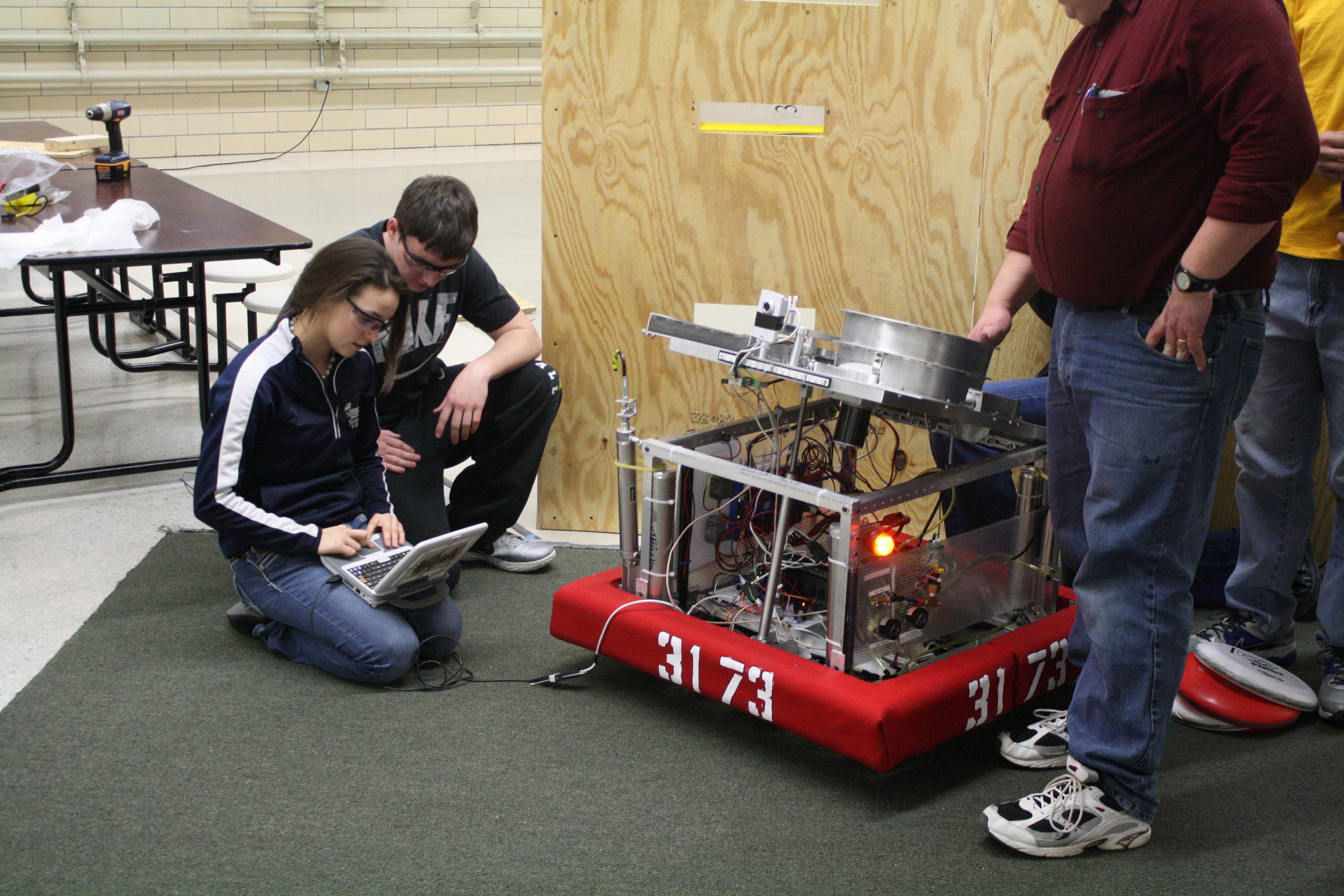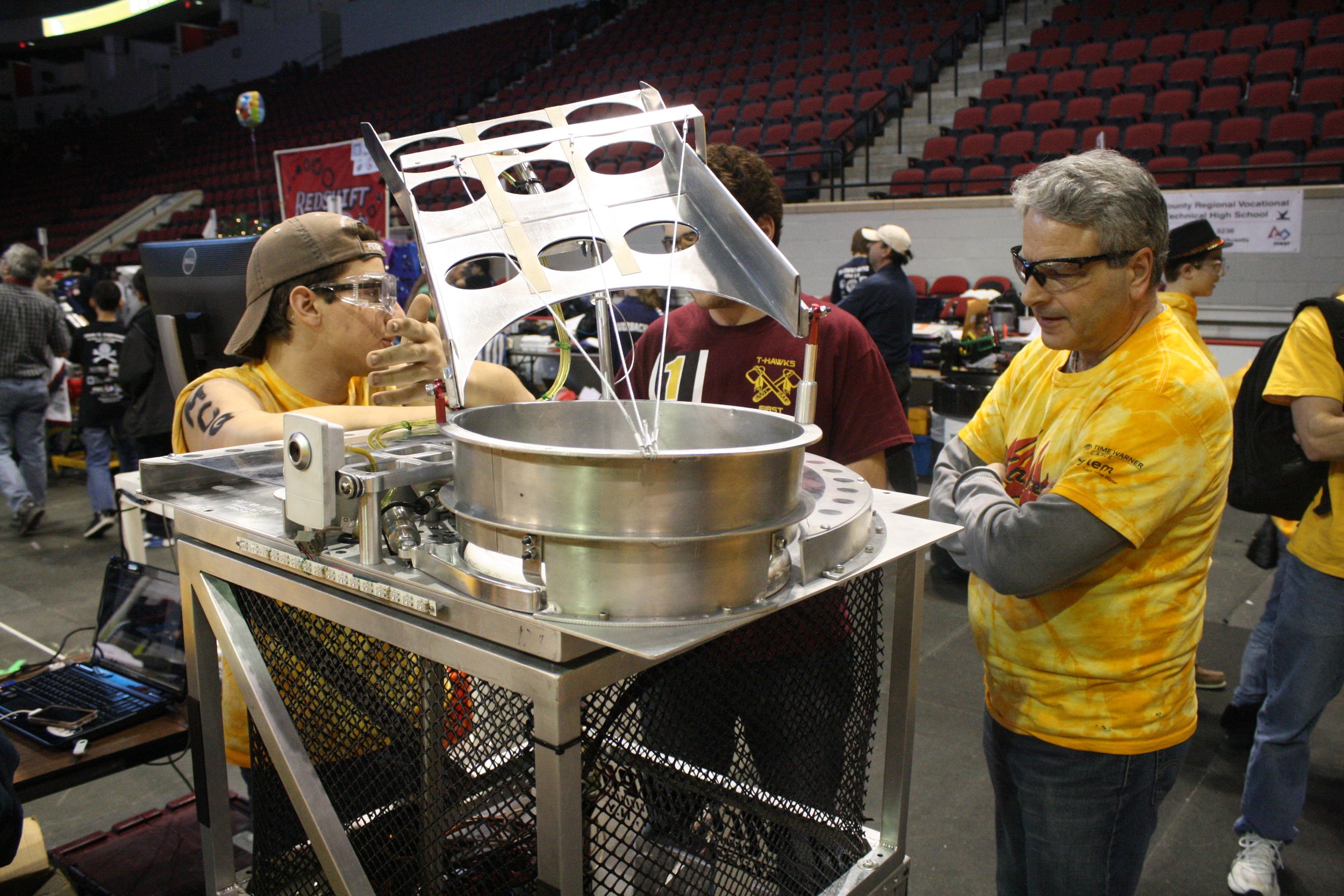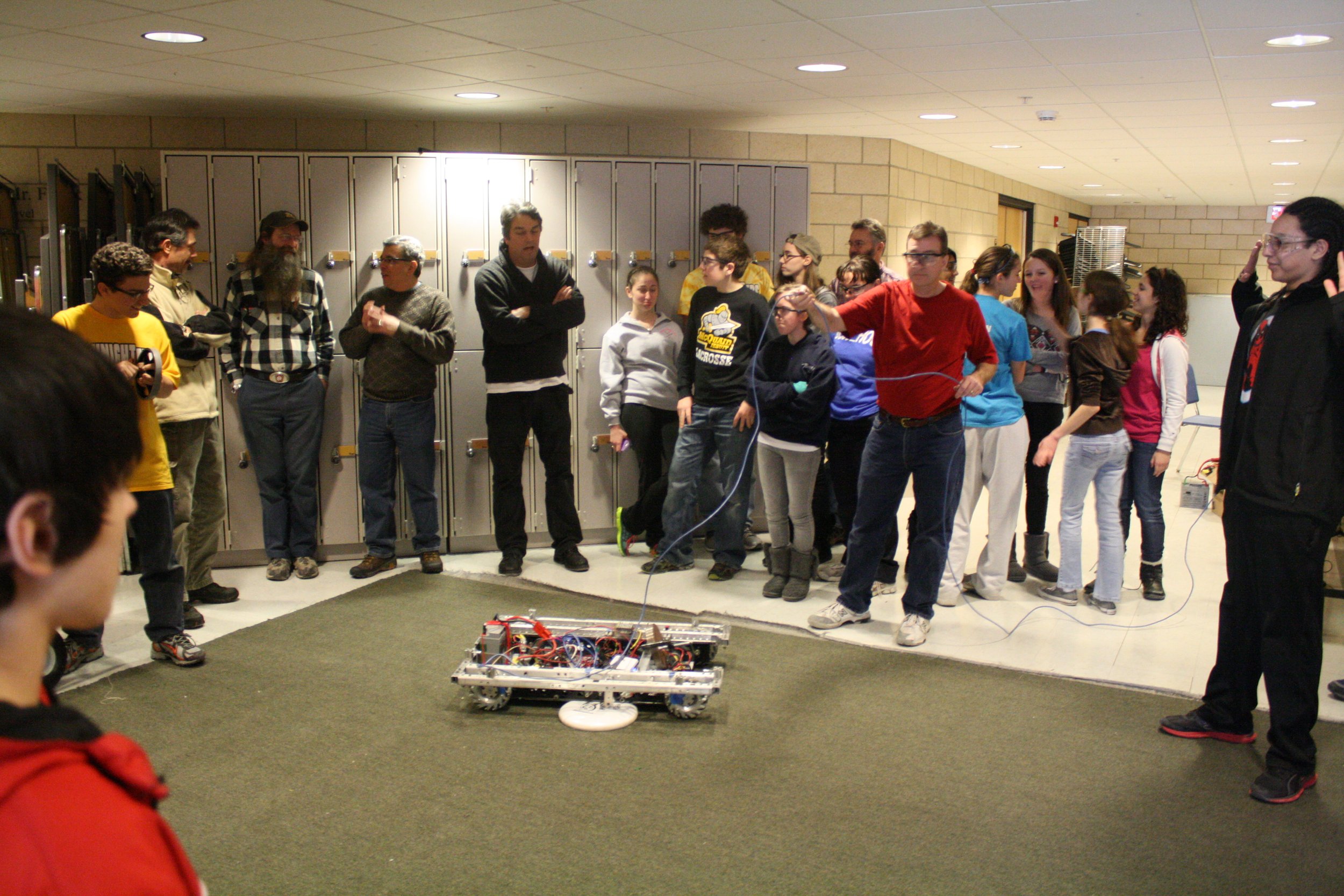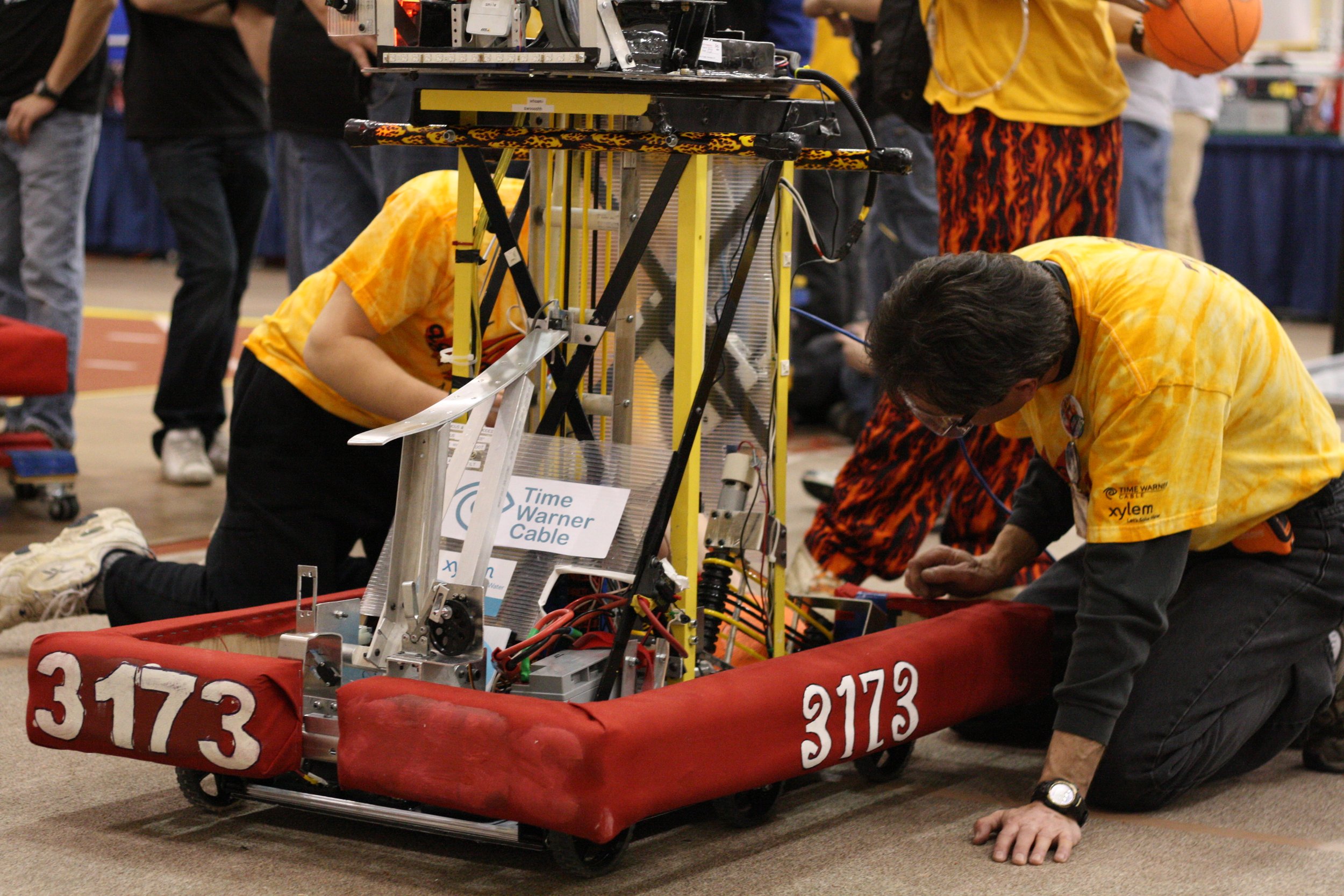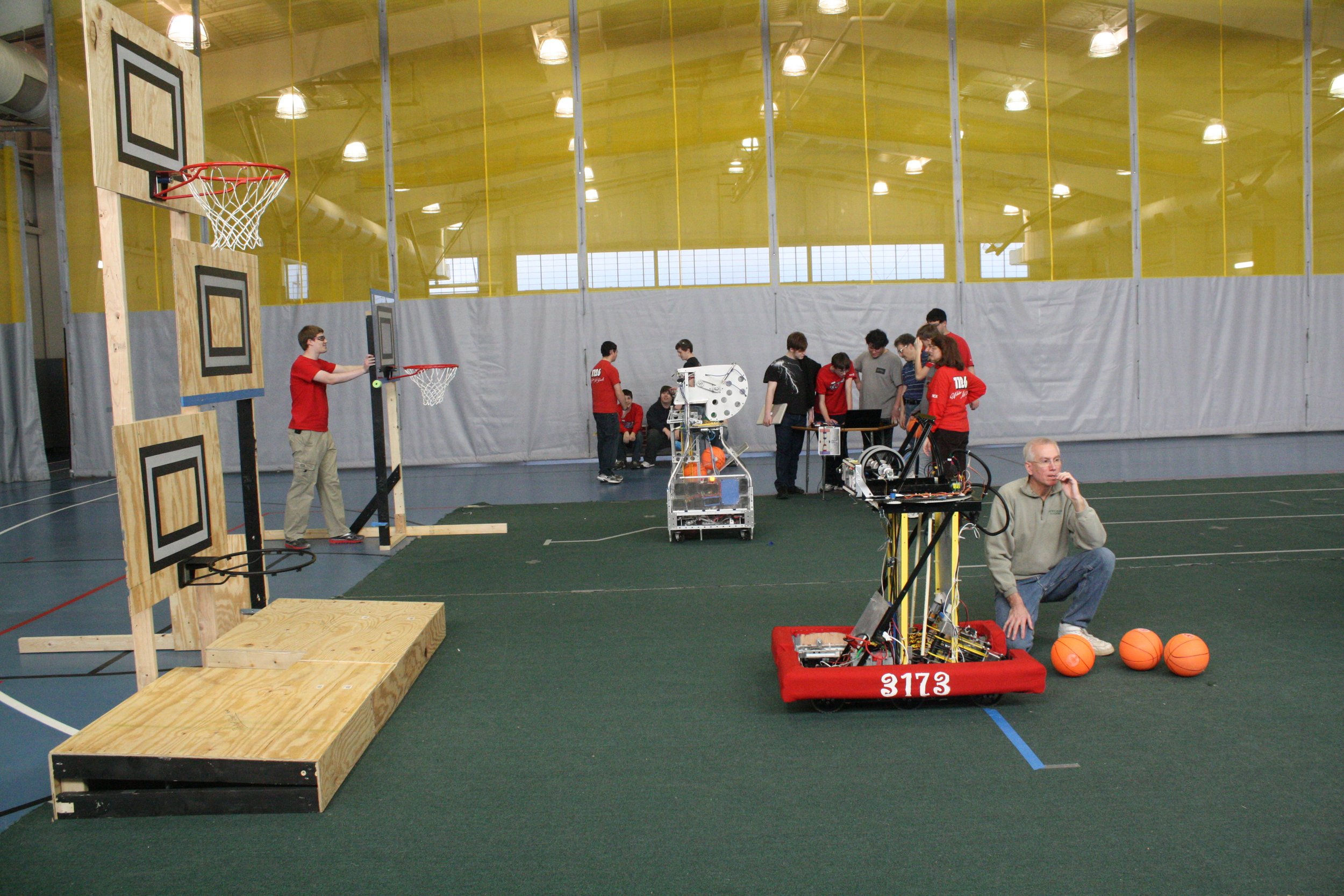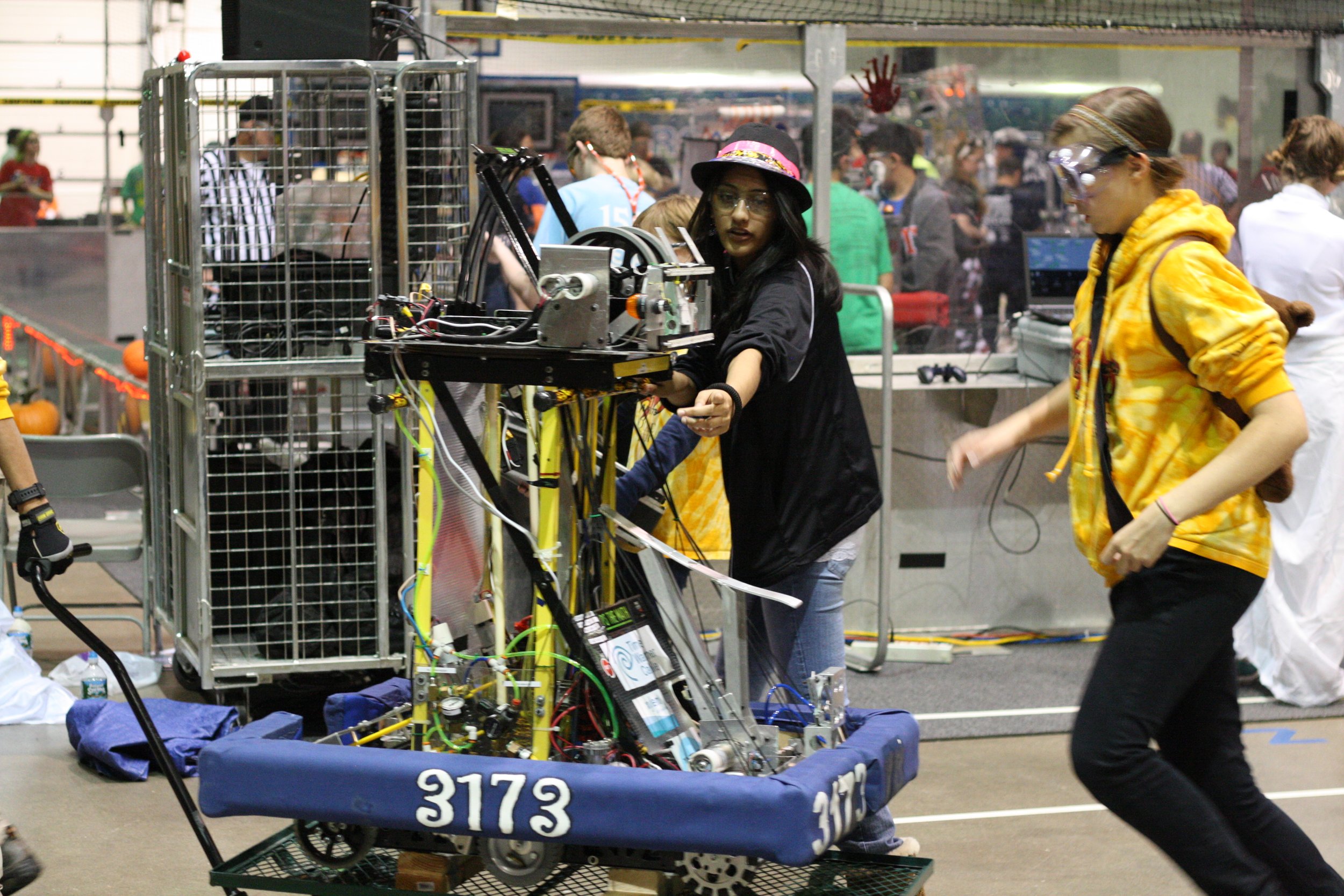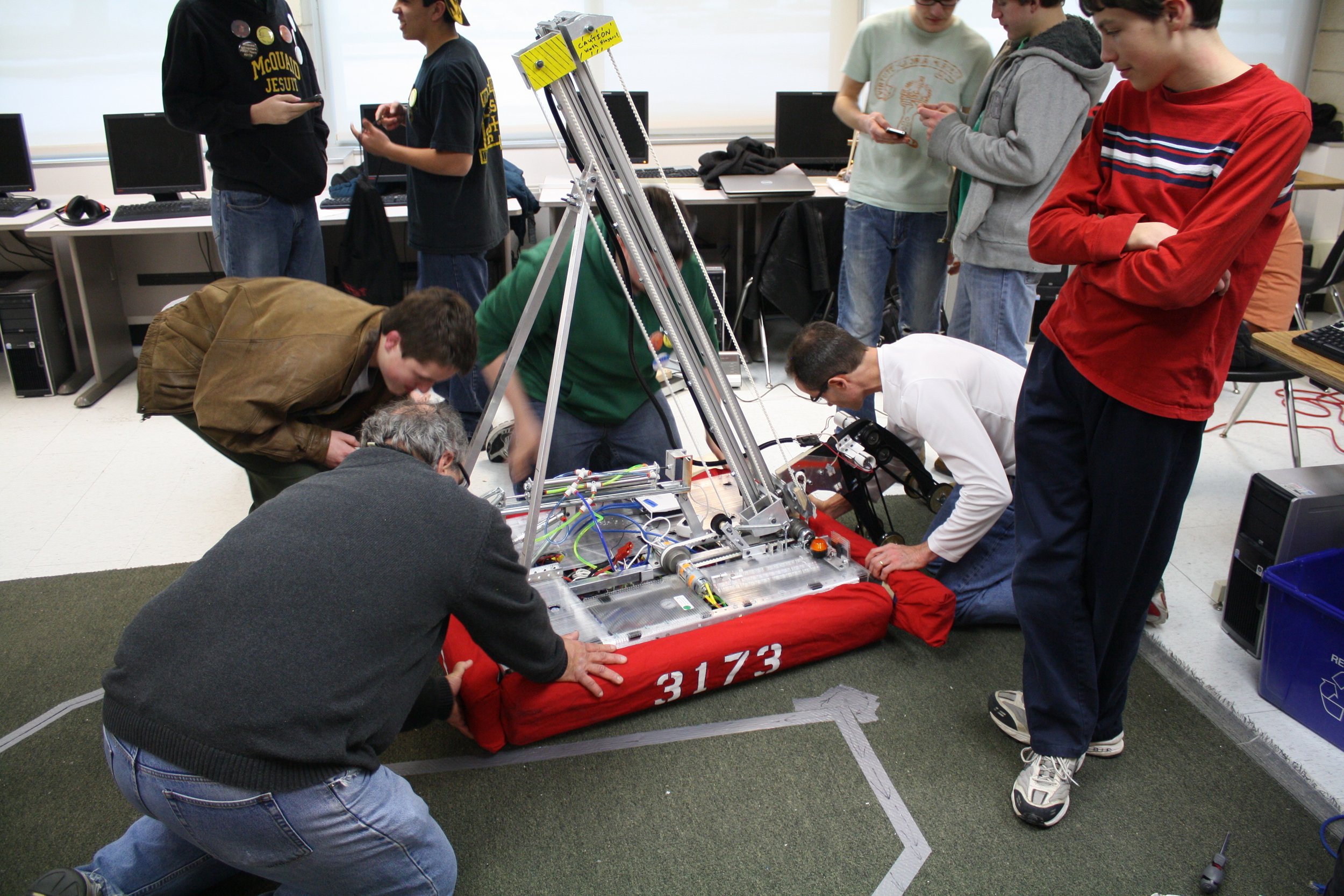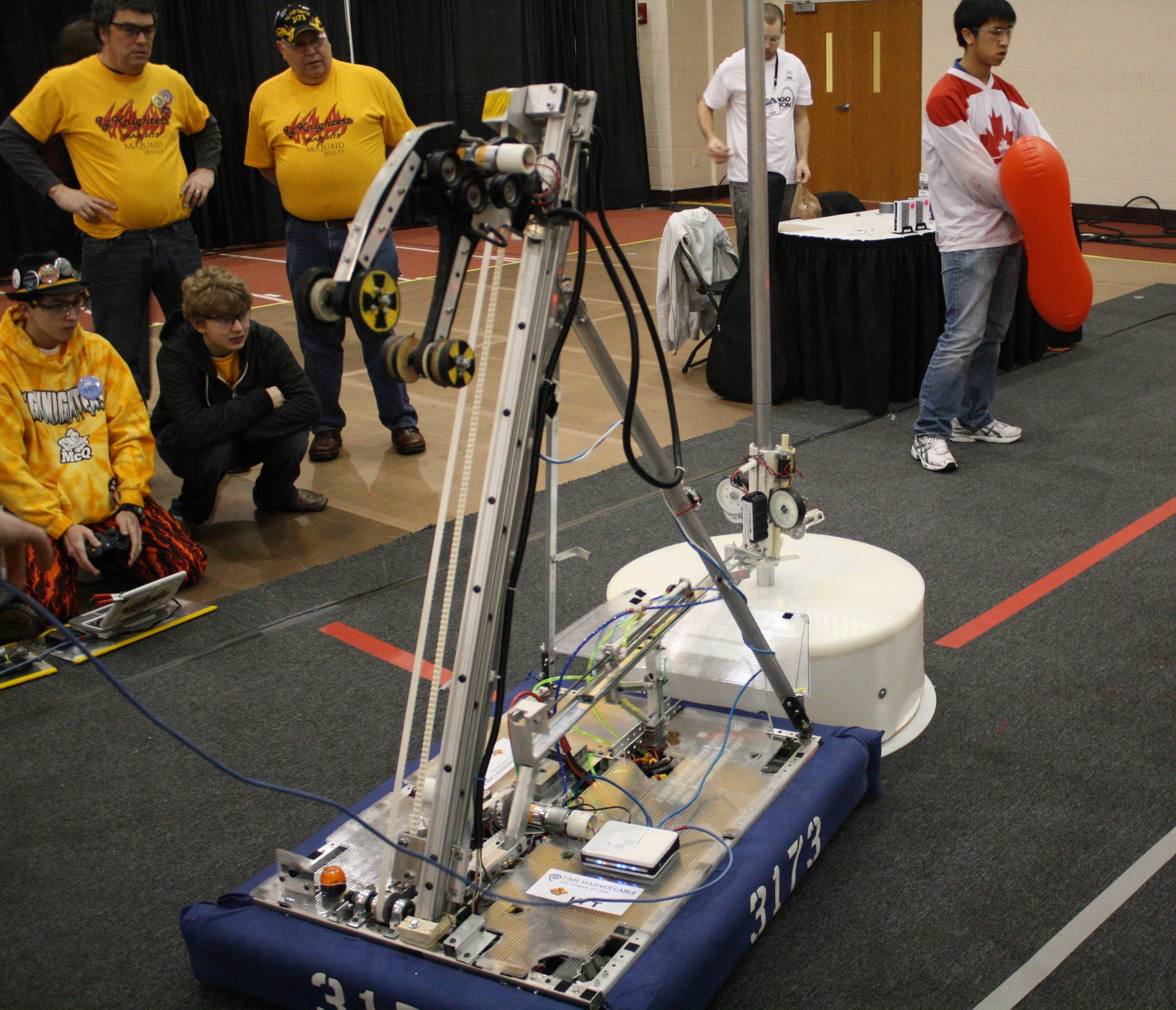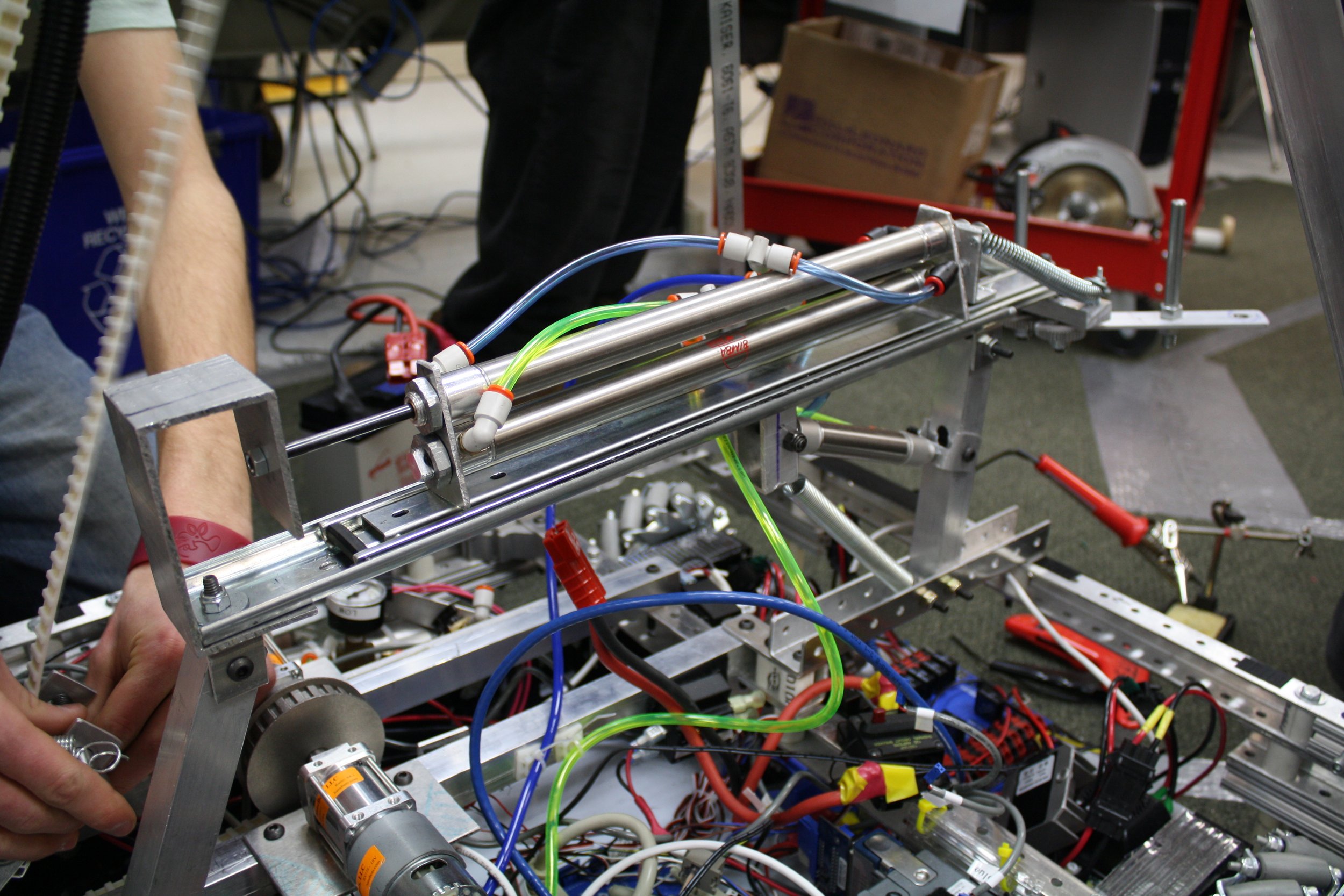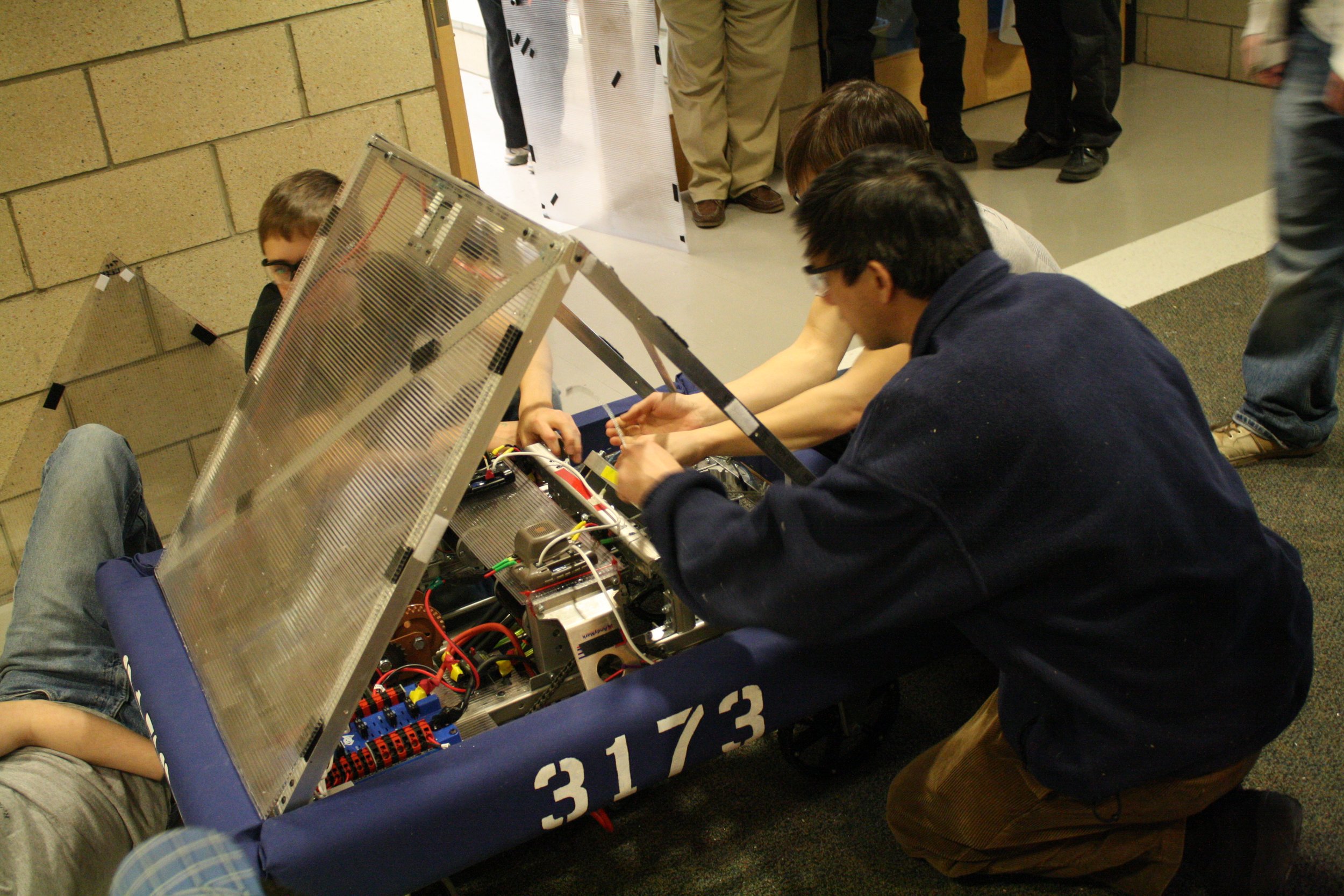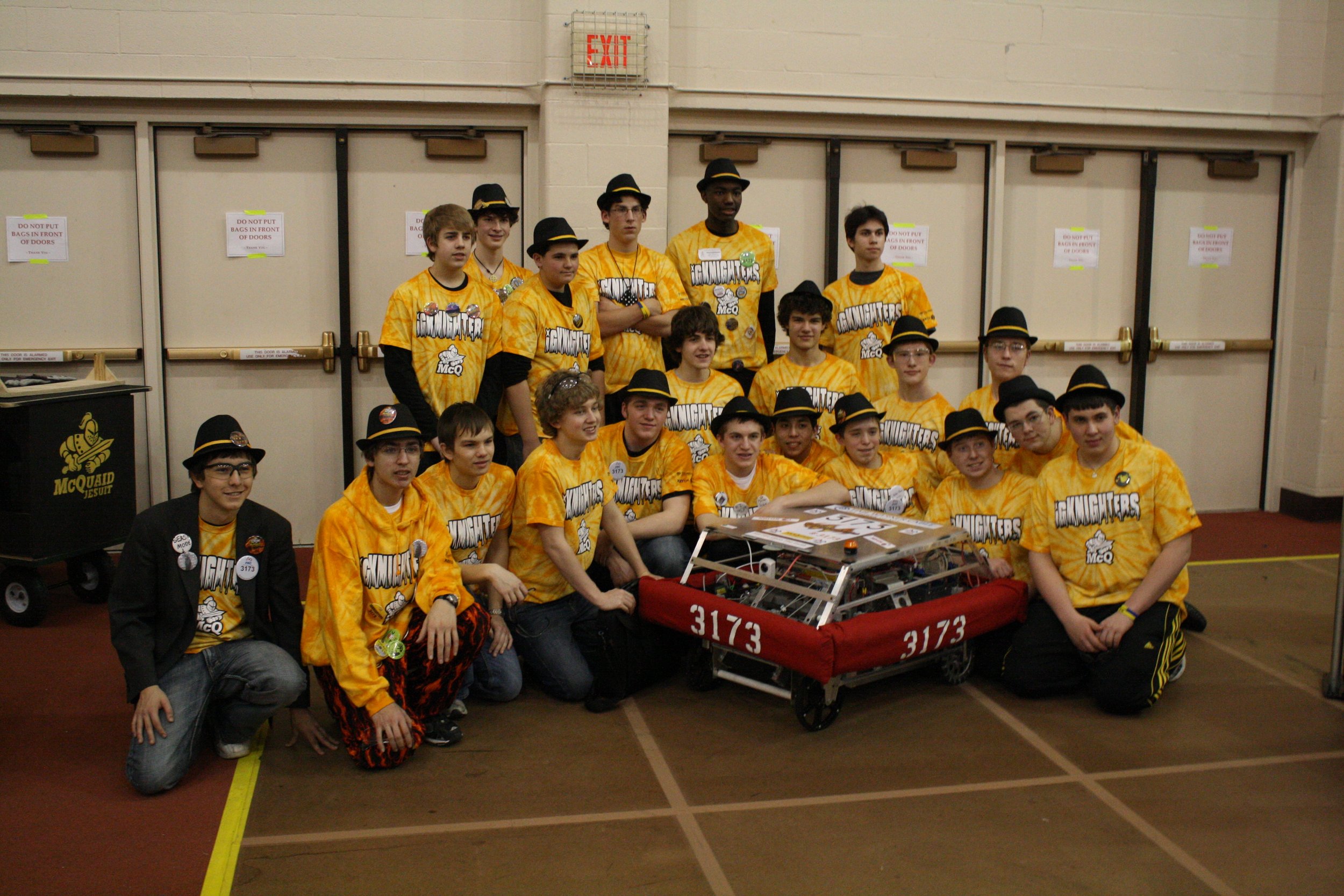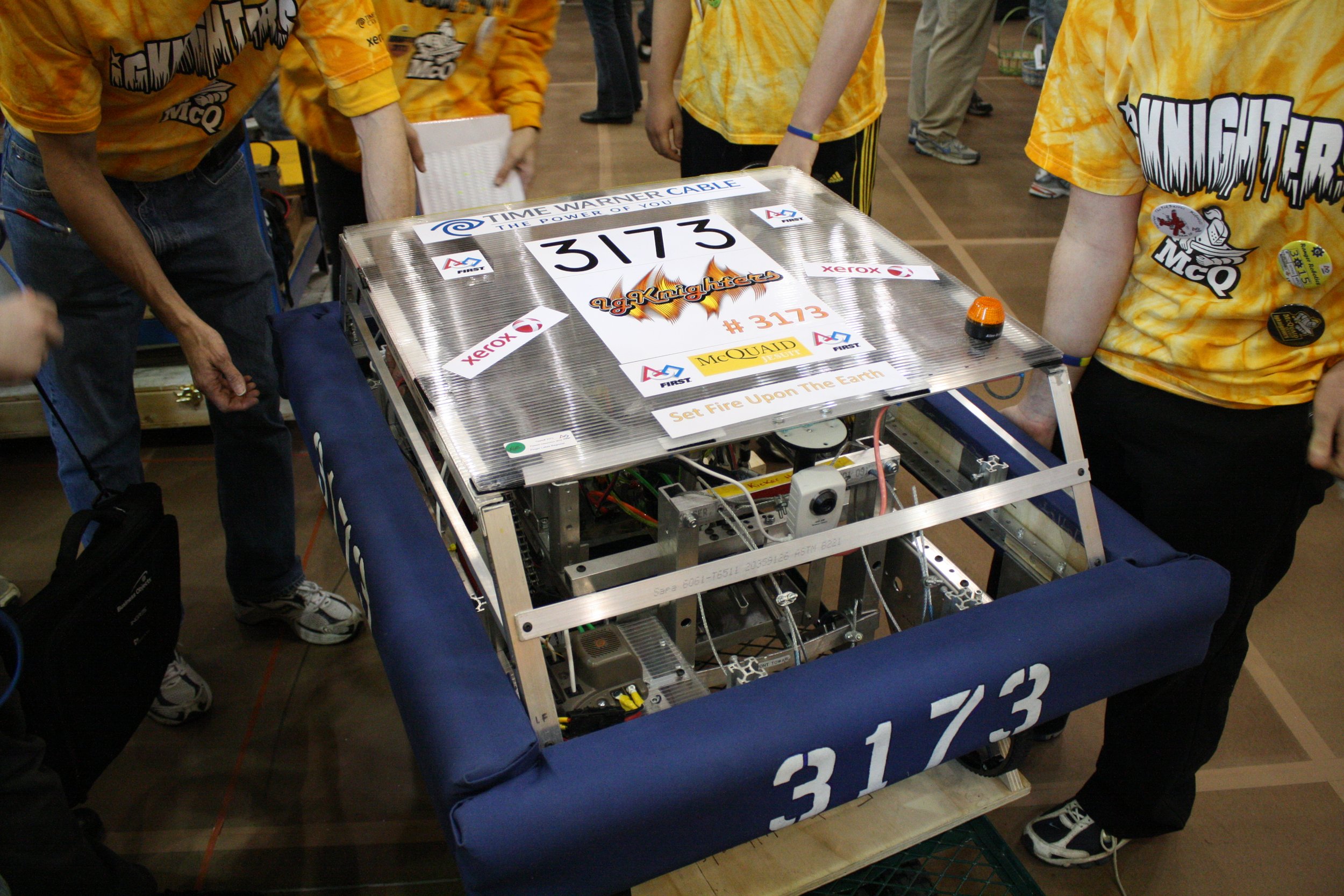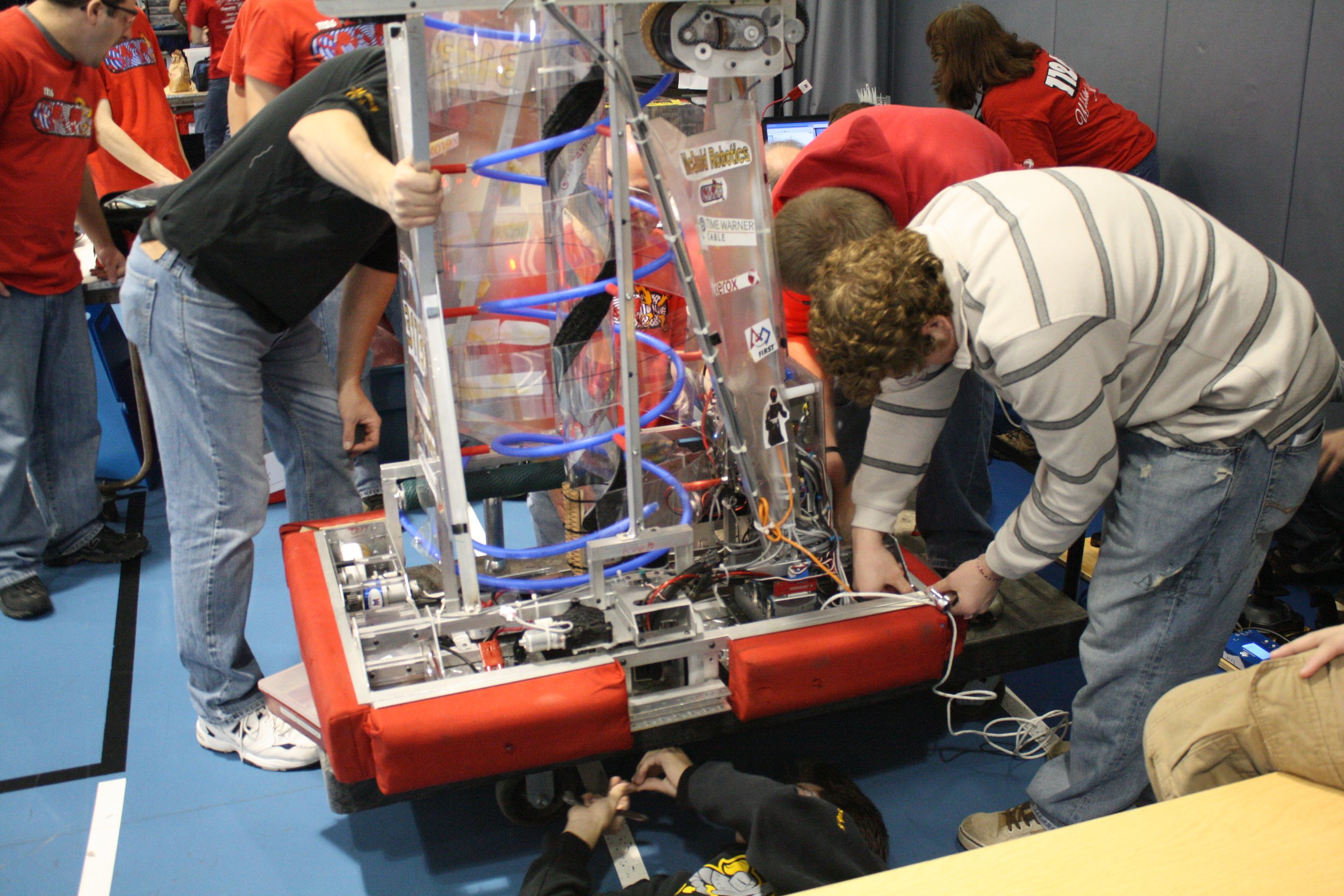FRC (FIRST Robotics Challenge)
2022 - Rapid React
Rapid React, stylized as RAPID REACT and officially known as Rapid React presented by The Boeing Company for sponsorship reasons, is the FIRST Robotics Competition (FRC) game for the 2022 season. The game is themed around transportation as part of the FIRST-wide FIRST Forward theme for 2021-2022.
2021 - Infinite Recharge at Home
“Due to the COVID-19 pandemic, the 2021 season is the first season in history to begin with no events scheduled, with teams instead invited to take part in three virtual challenges that will include judged awards. FIRST has also committed to regular reevaluations of the status of the pandemic to determine if in-person events are possible, with the first reevaluation taking place in January. In light of this, some districts had developed plans for limited hybrid events. For example, FIRST Chesapeake, which runs events in Maryland, Virginia, and Washington, D.C., had plans for events that would have taken place in March and April. After completing a review of health measures and COVID statistics, FIRST announced that no North American events would be approved until June 2021.”
2020 - Infinite Recharge
“The Infinite Recharge--was the 2020 FIRST Robotics season.--It involves two alliances of three teams each, with each team controlling a robot and performing specific tasks on a field to score points. The game centers around a futuristic city theme involving two alliances consisting of three teams each competing to perform various tasks, including shooting foam balls known as Power Cells into high and low goals to activate a Shield Generator, manipulating a Control Panel to activate this shield, and returning to the Shield Generator to park or climb at the end of the match. The objective is to energize and activate the shield before the match ends and asteroids strike FIRST City, a futuristic city modeled after Star Wars.”
2019 - Destination: Deep Space
“Destination: Deep Space…is the FIRST Robotics Competition game for the 2019 season. It involves two alliances of three teams each, with each team controlling a robot and performing specific tasks on a field to score points. The game centers around an outer space theme involving two alliances consisting of three teams each competing to place poly-carbonate hatch panels and orange rubber balls or "cargo" on rockets and cargo ships before returning to their HAB platform to climb at the end of the match.”
2018 - FIRST Power Up
“FIRST Power Up…is the FIRST Robotics Competition game for the 2018 season. It involves two alliances of three teams each, with each team controlling a robot and performing specific tasks on a field to score points. The game has a retro 8-bit theme and teams are required to place milk crates, or "power cubes", on large balancing scales to tip the scale and gain ownership. Alliances can also trade power cubes for power ups, giving them a temporary advantage in a match. At the end of the match, robots can climb the tower attached to the centre balancing scale using a rung attached to the tower, giving them additional points.”
2017 - FIRST Steamworks
“FIRST Steamworks…was the FIRST Robotics Competition game for the 2017 season. As in past games, two alliances of three individual teams and their robots compete on a field to score "match" point to win the game and ranking points to advance to playoff rounds. The game has a steampunk theme and teams are required to shoot wiffle balls which represent fuel into a simulated boiler which transfers the generated steam into an airship in the middle of the field. Each alliance has one airship, which they pressurize with steam from the boiler and load with plastic gears from the field. At the end of the match, robots can climb and hang on team-supplied ropes (or standard ropes supplied by FIRST) attached to the airship for additional points.”
2016 - FIRST Stronghold
“FIRST Stronghold was the 2016 FIRST Robotics Competition game. The game was played by two alliances of up to three teams each, and involves breaching the opponents’ defenses, known as outer work as well as capturing their tower by first firing "boulders" (small foam balls) at it, and then surrounding or scaling the tower using a singular rung on the tower wall. Points were scored by crossing elements of the tower's outer works, shooting boulders into the opposing tower's five goals in order to lower the tower strength, and by surrounding and scaling the tower.”
2015 - Recycle Rush
“Recycle Rush was the 2015 FIRST Robotics Competition game. It involves picking up and stacking totes on scoring platforms, putting pool noodles ("litter") inside recycling containers, and putting the containers on top of scoring stacks of totes. There is also a coopertition aspect of the game where both alliances of teams can pool their totes and stack them on a step dividing the field to each gain twenty points. Along with these robot actions, human players can attempt to throw the pool noodles across the field to gain four points for each noodle left in the opposing alliance's work zone.”
2014 - Aerial Assist
“Aerial Assist was the 2014 FIRST Robotics Competition game…In the game, the alliances win via getting the scoring elements (2'-diameter exercise balls) into the scoring areas located on the far end of the field…Throwing the ball over the truss (the midpoint overhang) when transferring, a la volleyball, will add 10 additional points. Having an alliance partner catch it will earn 10 more points. A robot in the goalie zones can block shots via extending upwards.”
2013 - Ultimate Ascent
“Ultimate Ascent was the 2013 FIRST Robotics Competition game. It is styled similarly to disc golf… Drivers control their robots, attempting to score discs into the goals at the opposite end of the playing field. The robots also can climb their alliance's pyramid at the end of the match to score additional points. In the final thirty seconds the human players can throw their six colored discs into play over the alliance wall.”
2012 - Rebound Rumble
“Rebound Rumble is the 2012 FIRST Robotics Competition game.[6] It is styled similarly to basketball…Robots start a match in contact with their key, the semicircular plastic area approximately at the free-throw line.[11] Each match lasts 135 seconds[9] and is divided into two portions: Hybrid mode and Teleoperated (Teleop) mode.[11] During Hybrid mode, two robots on each alliance have to act autonomously, while the third may be controlled by means of a Microsoft Kinect or act autonomously.[8][11] During Teleop, all robots are controlled by human drivers…Throughout a match, teams can score points as follows by scoring basketballs into hoops…At the end of the match, points are scored for balanced alliance bridges, but not the Coopertition bridge.”
2011 - Logomotion
“Logo Motion is the 2011 FIRST Robotics Competition game. Playing pieces are inner tubes shaped like the components of the FIRST logo. The primary objective of the game is to place them on racks to gain points. In the endgame, robots deploy smaller robots ("minibots") to climb a tower.[4] Minibots must be made from the FIRST Tech Challenge kit of parts. The game celebrates the 20th season of the FRC and is also meant to commemorate the artist Jack Kamen, who designed the original FIRST logo.”
2010 - Breakaway
“Breakaway is the game for the 2010 FIRST Robotics Competition, announced on January 9, 2010.[5] Robots direct soccer balls into goals, traverse "bumps" in the field, suspend themselves and each other on towers, and/or go through a tunnel located in the center of the field…Balls are kicked or herded into goals located in the corners of the fields. There are two goals for each alliance, adding up to 4 goals total.”
2009 - Lunacy
“Lunacy is the game for the 2009 FIRST Robotics Competition. Announced on January 3, 2009, the name and some of the features of the game honor the 40th anniversary of the first human mission to the Moon (Latin: Luna). It is FRC's 18th game.[4] This is the first FRC competition to use the cRIO Mobile Device Controller control system from National Instruments…Total score for the alliance is the total number of points scored by placing Moon Rocks, Empty Cells and Super Cells in the trailers of all of the robots of the opposing alliance, less any deductions for penalties.”


